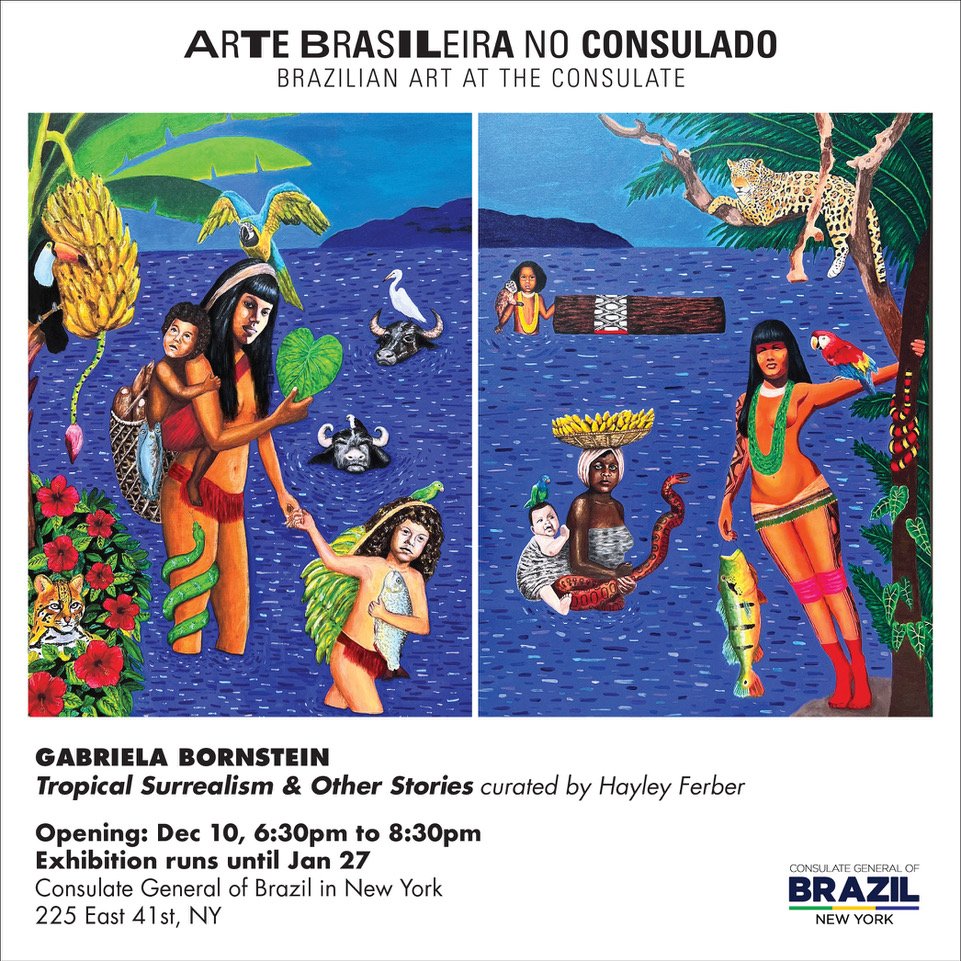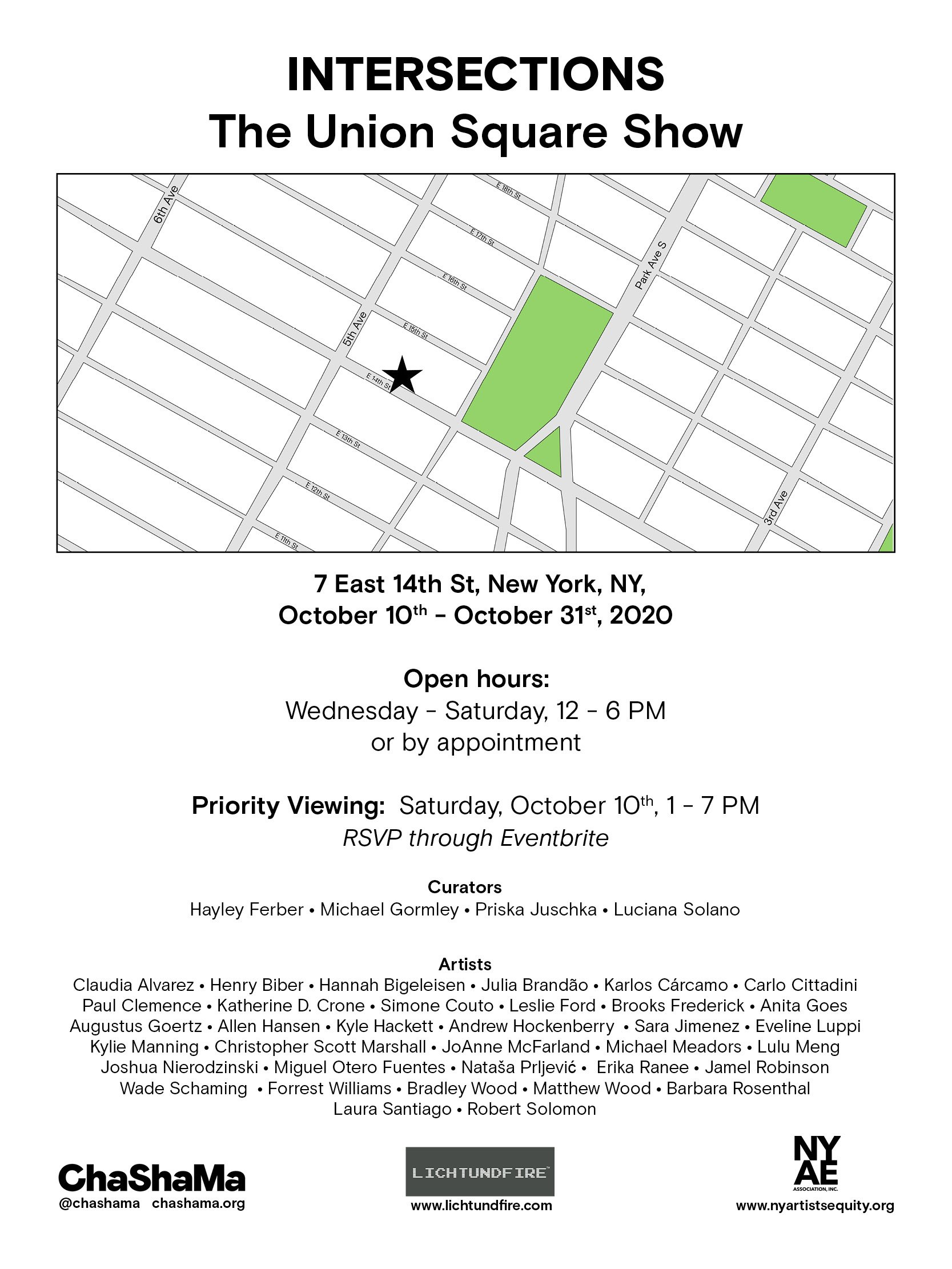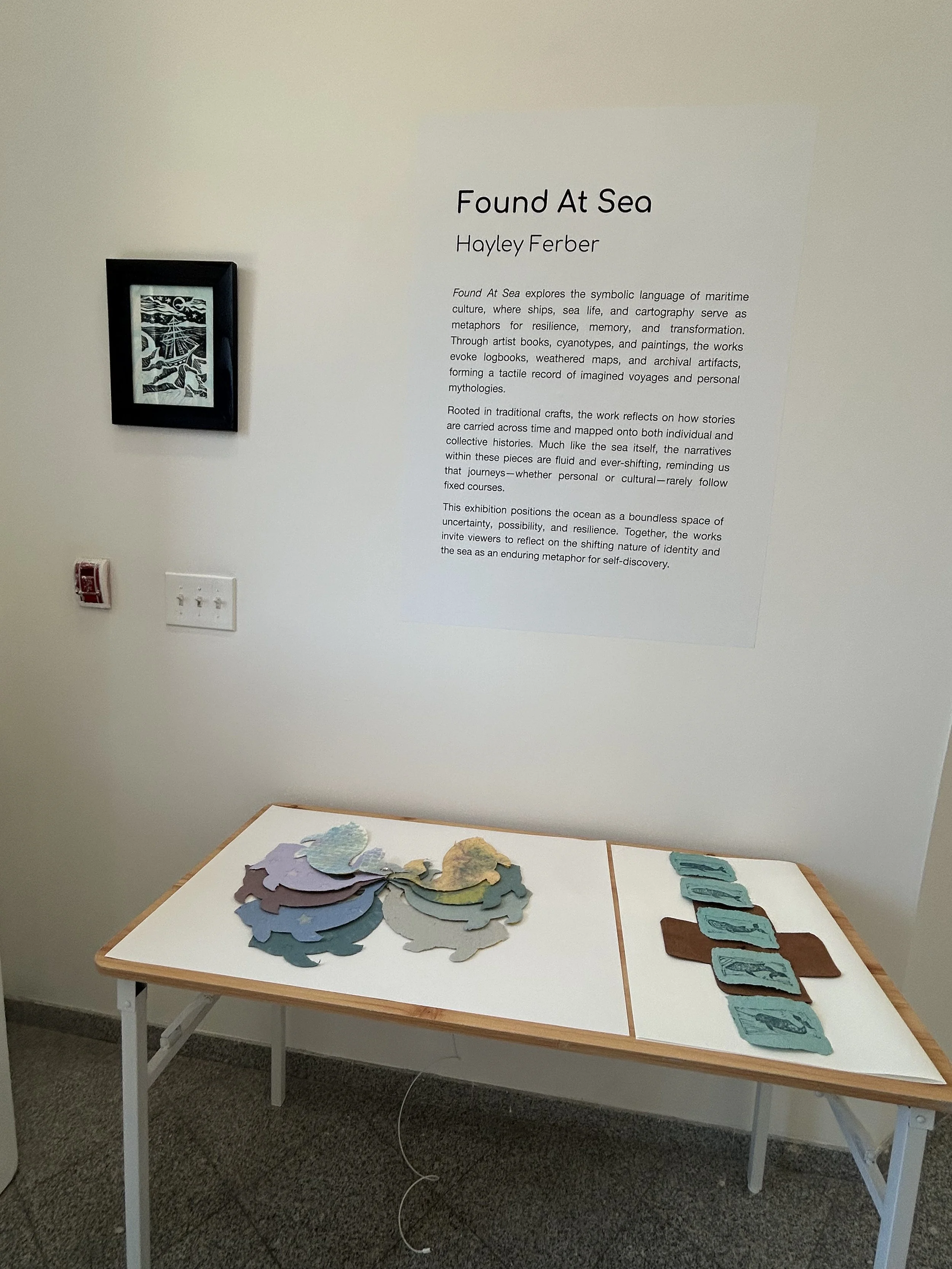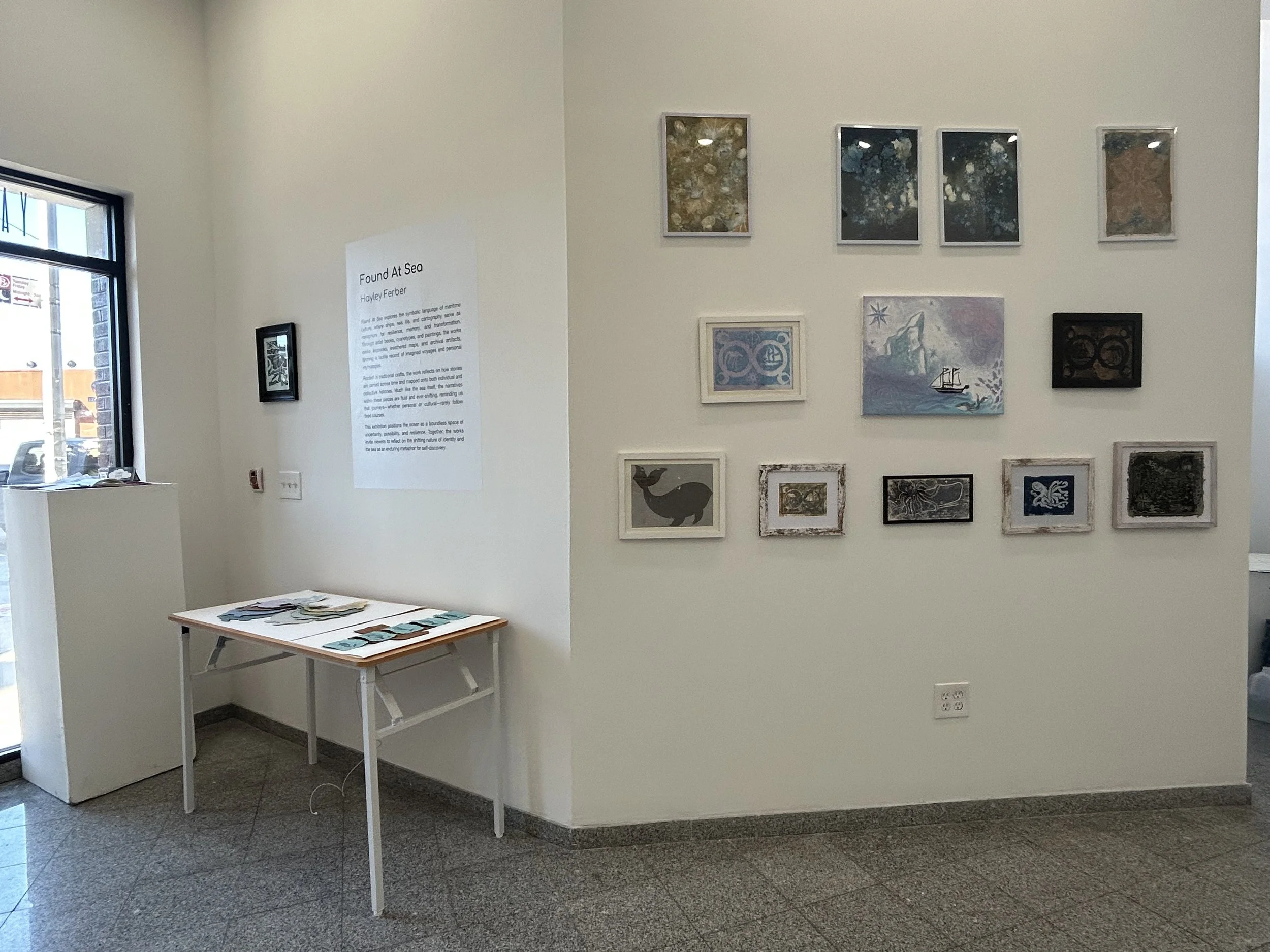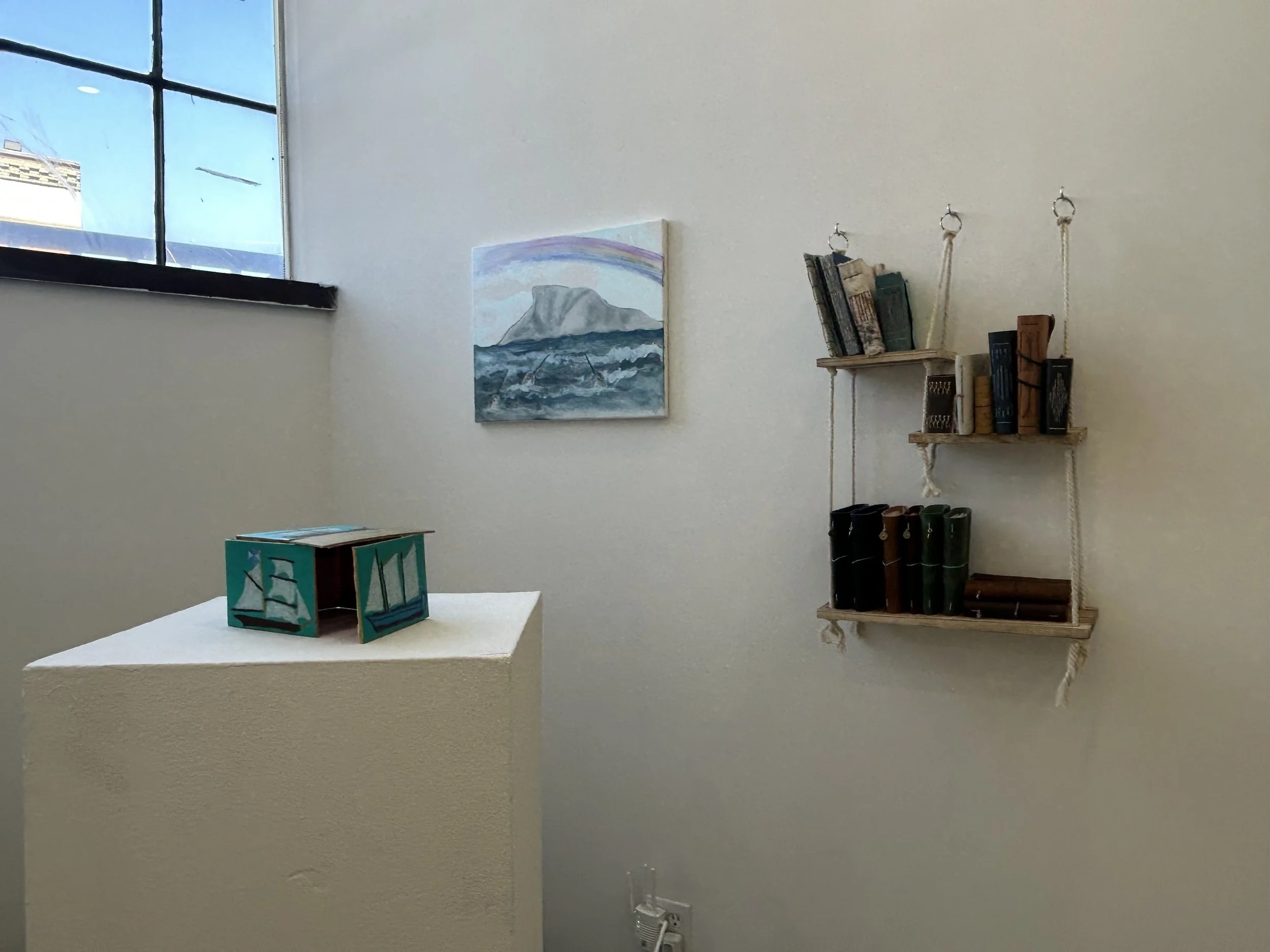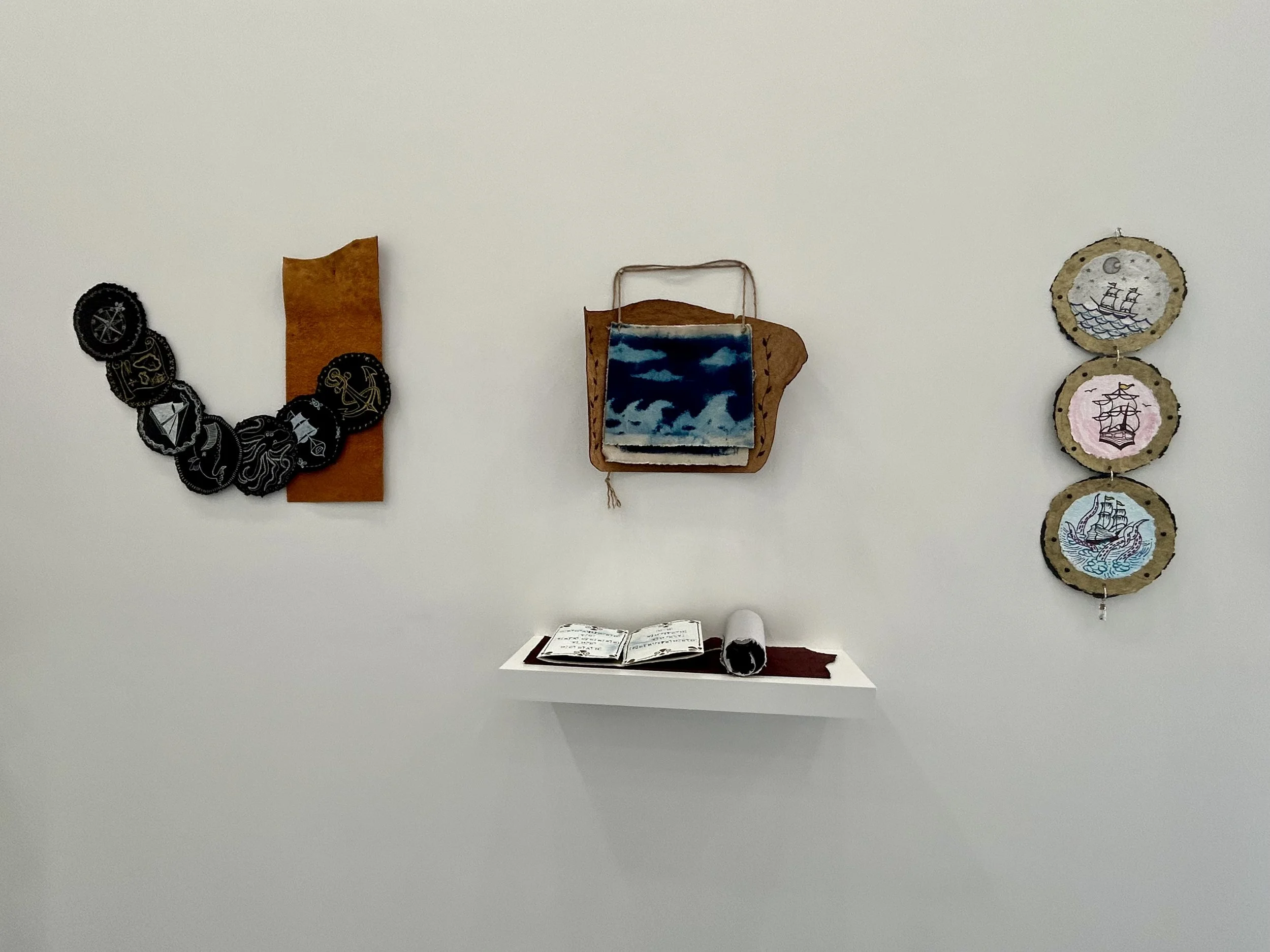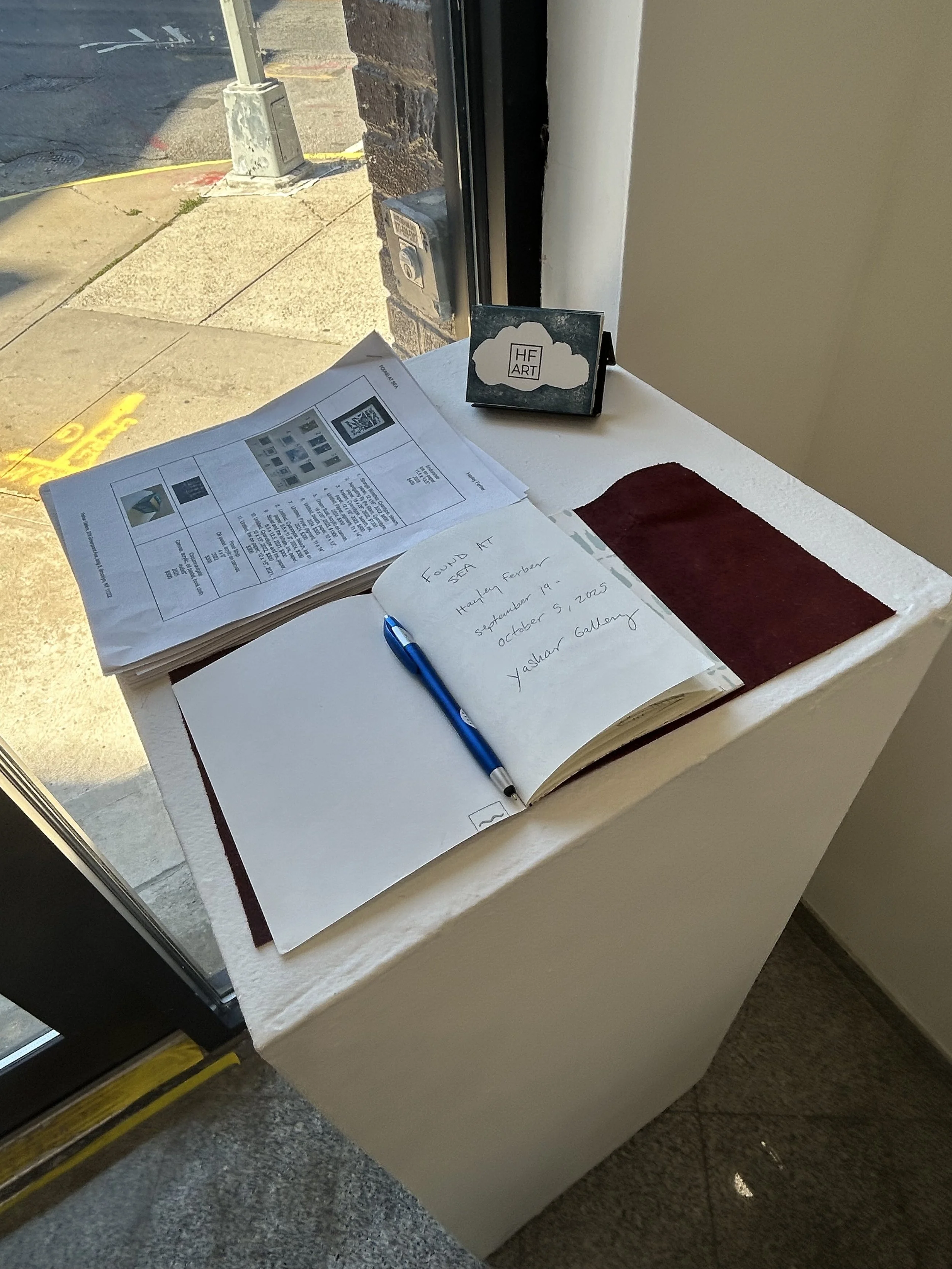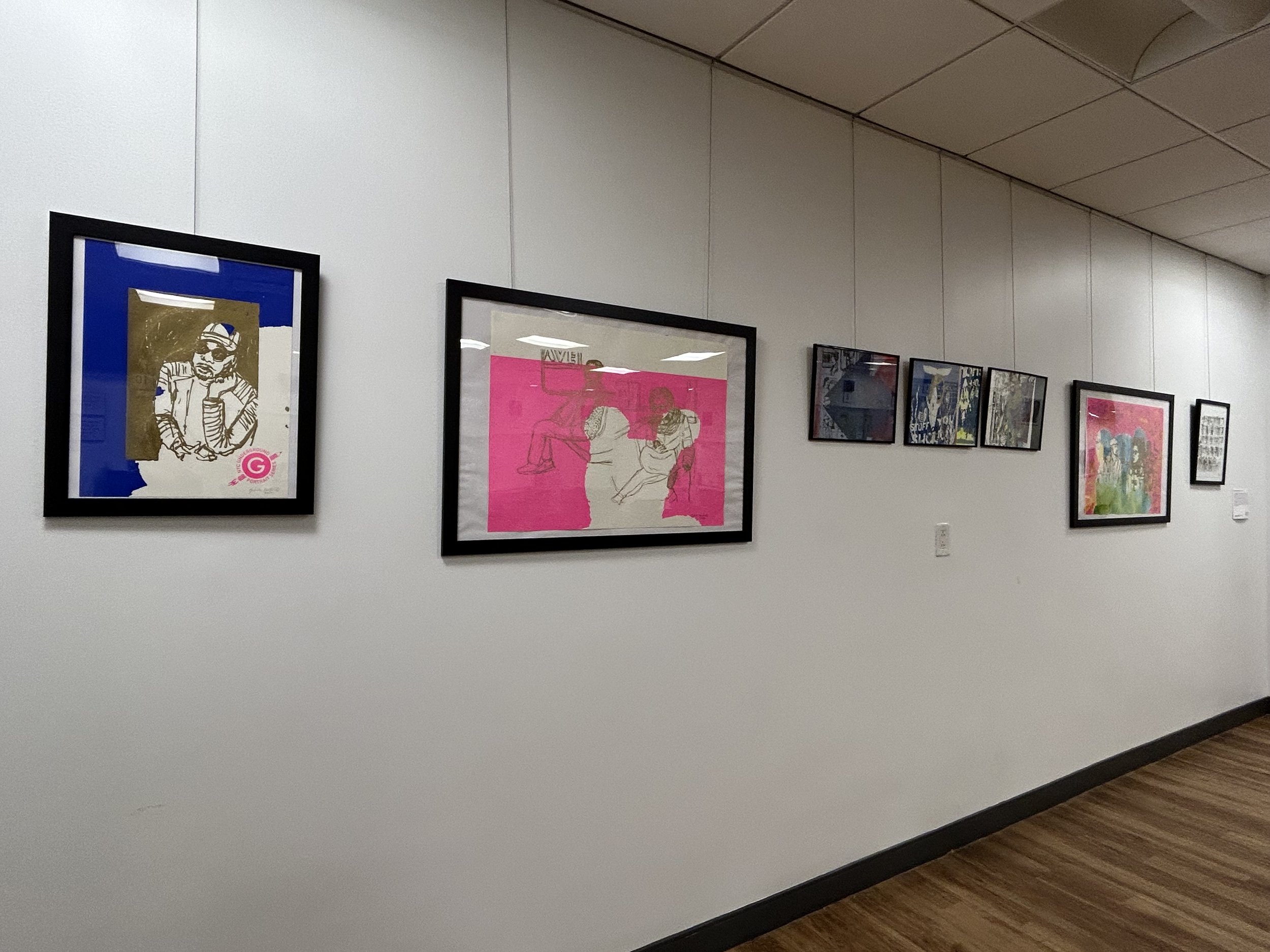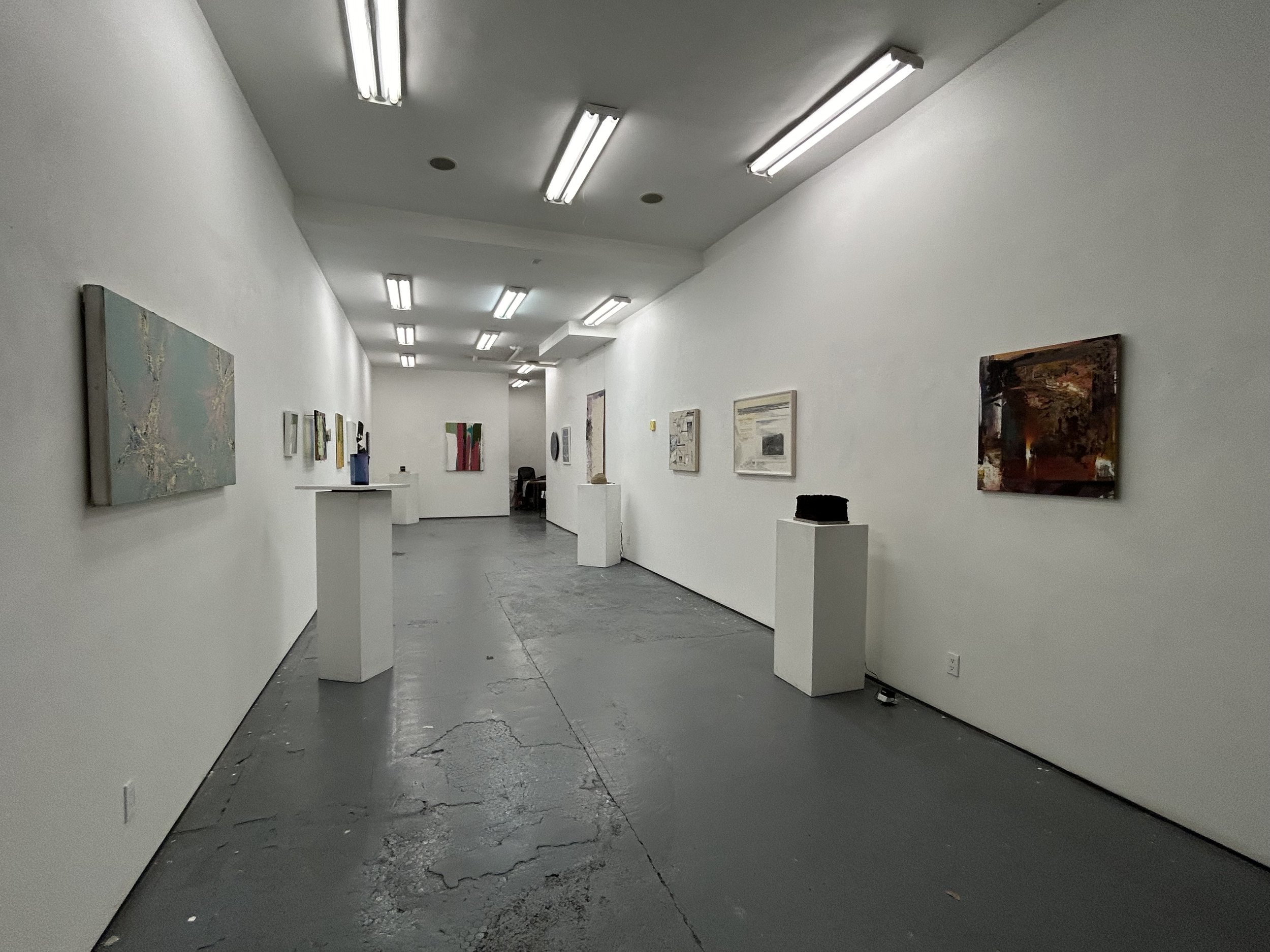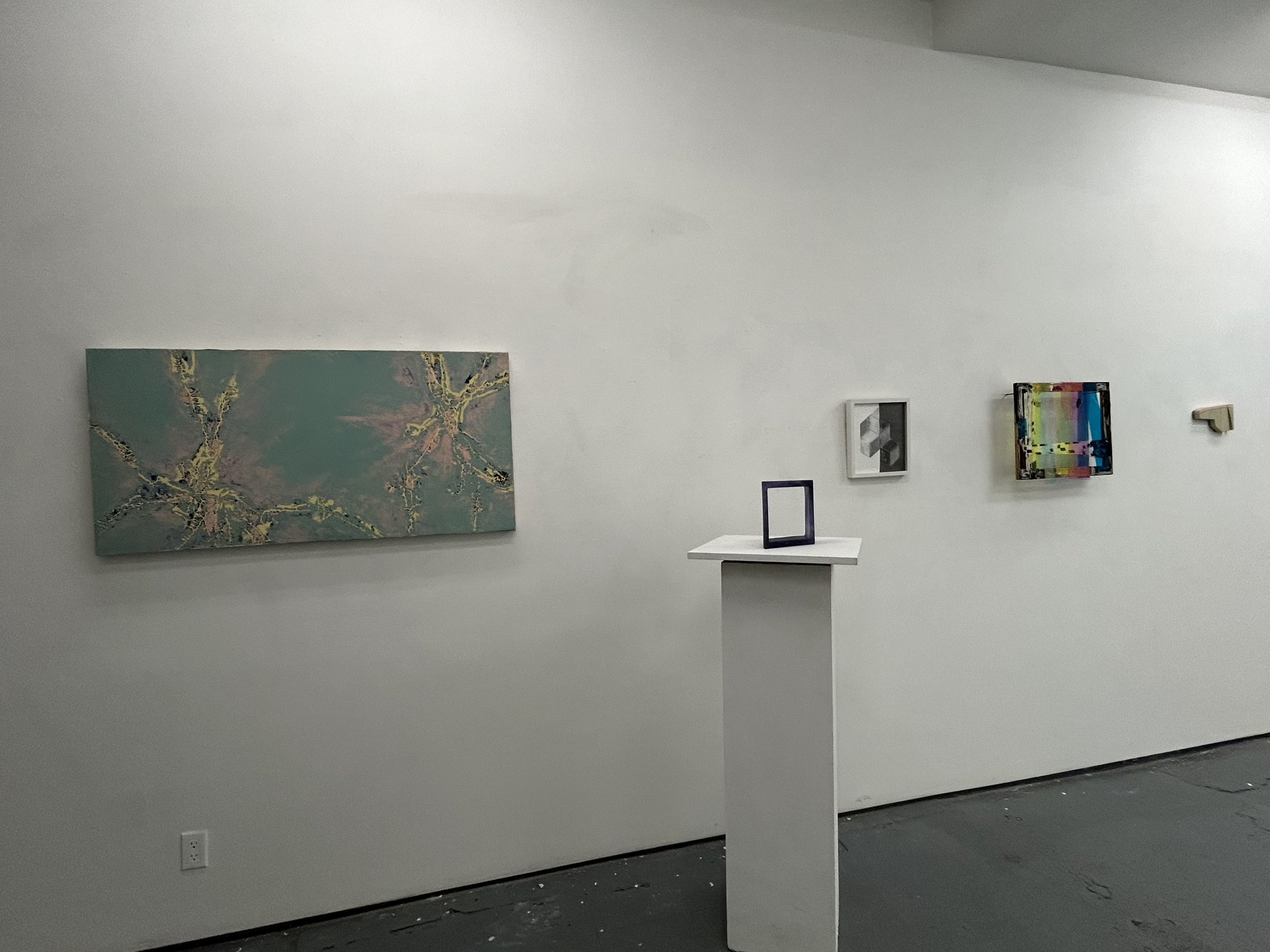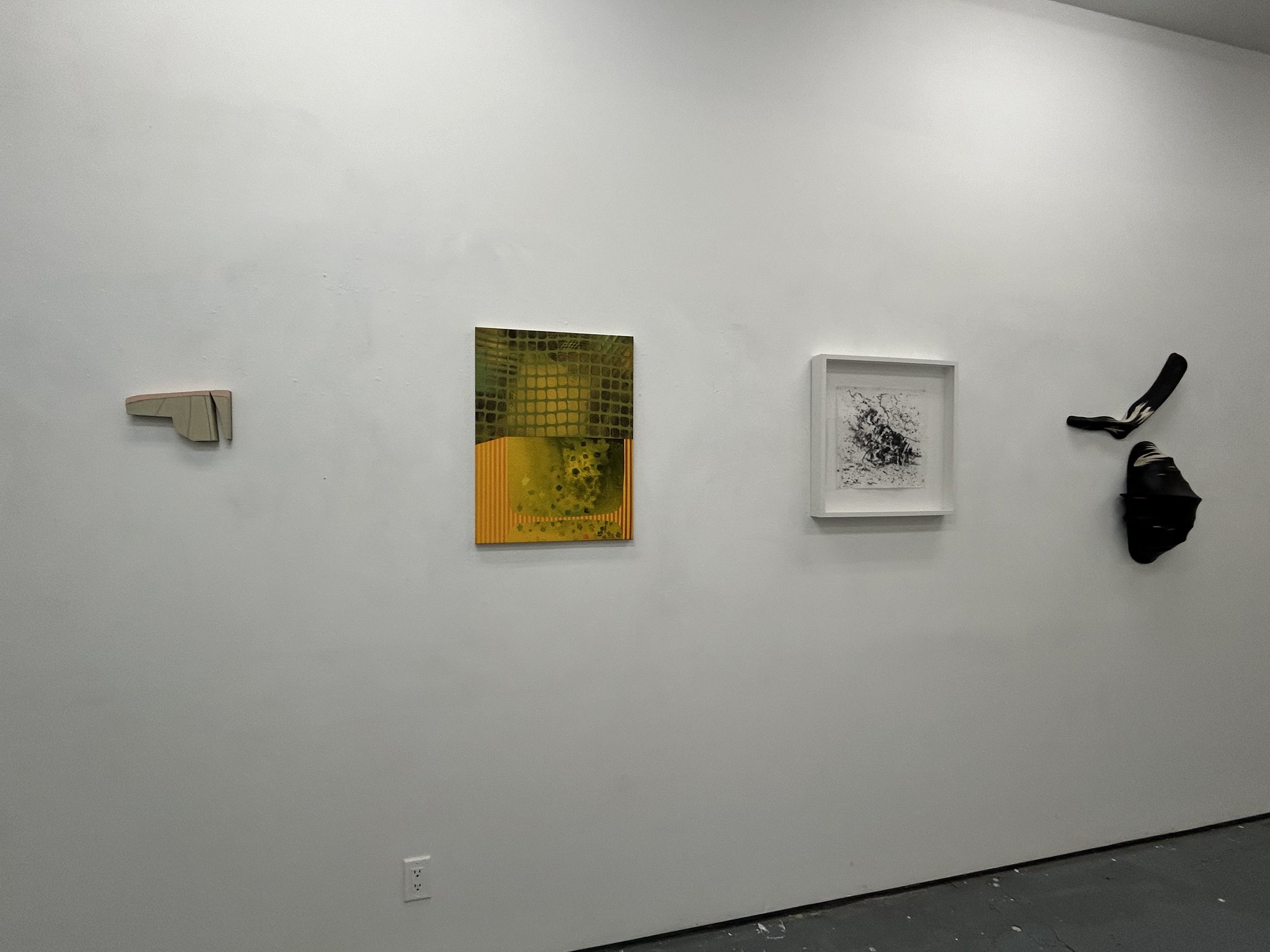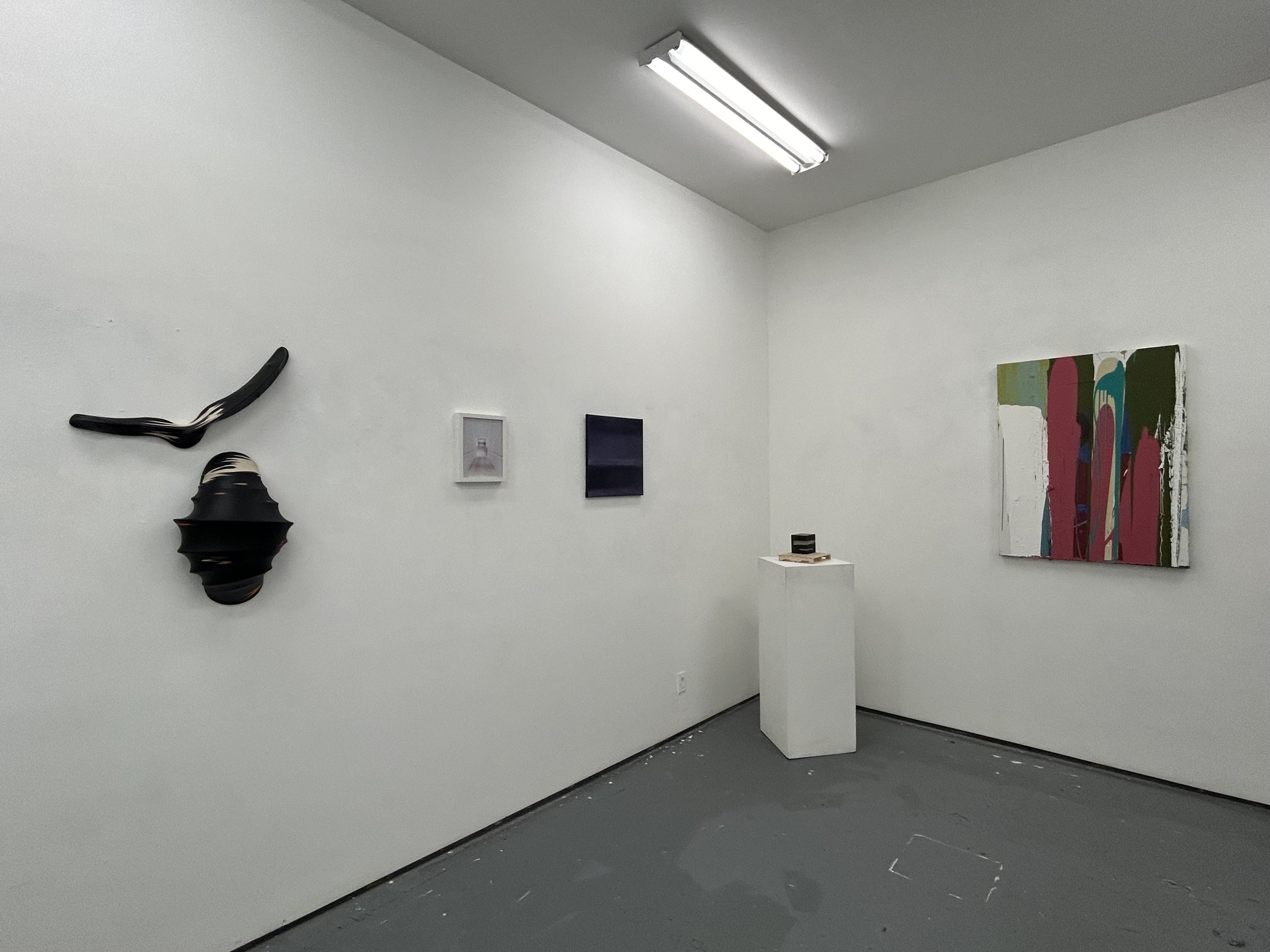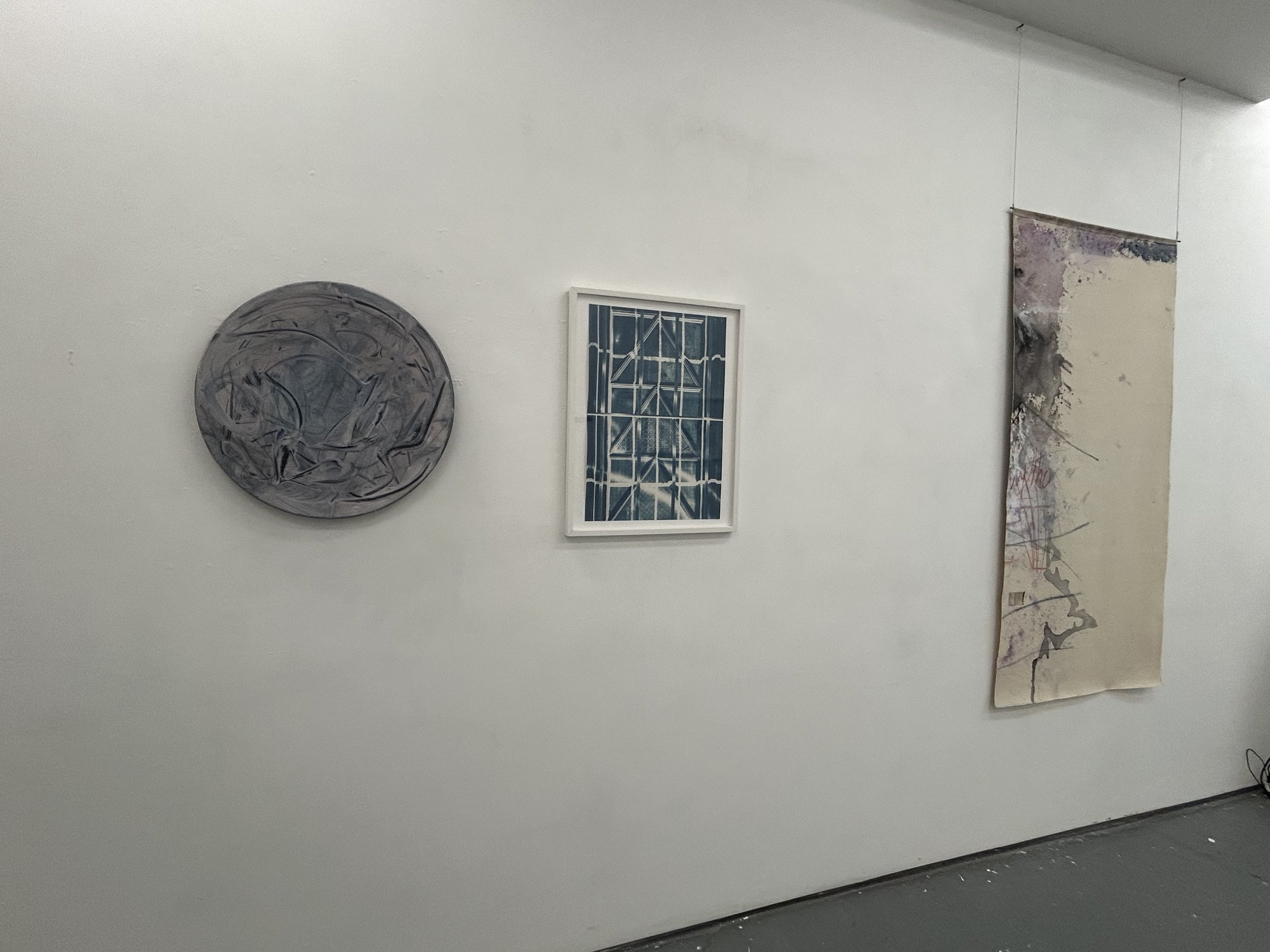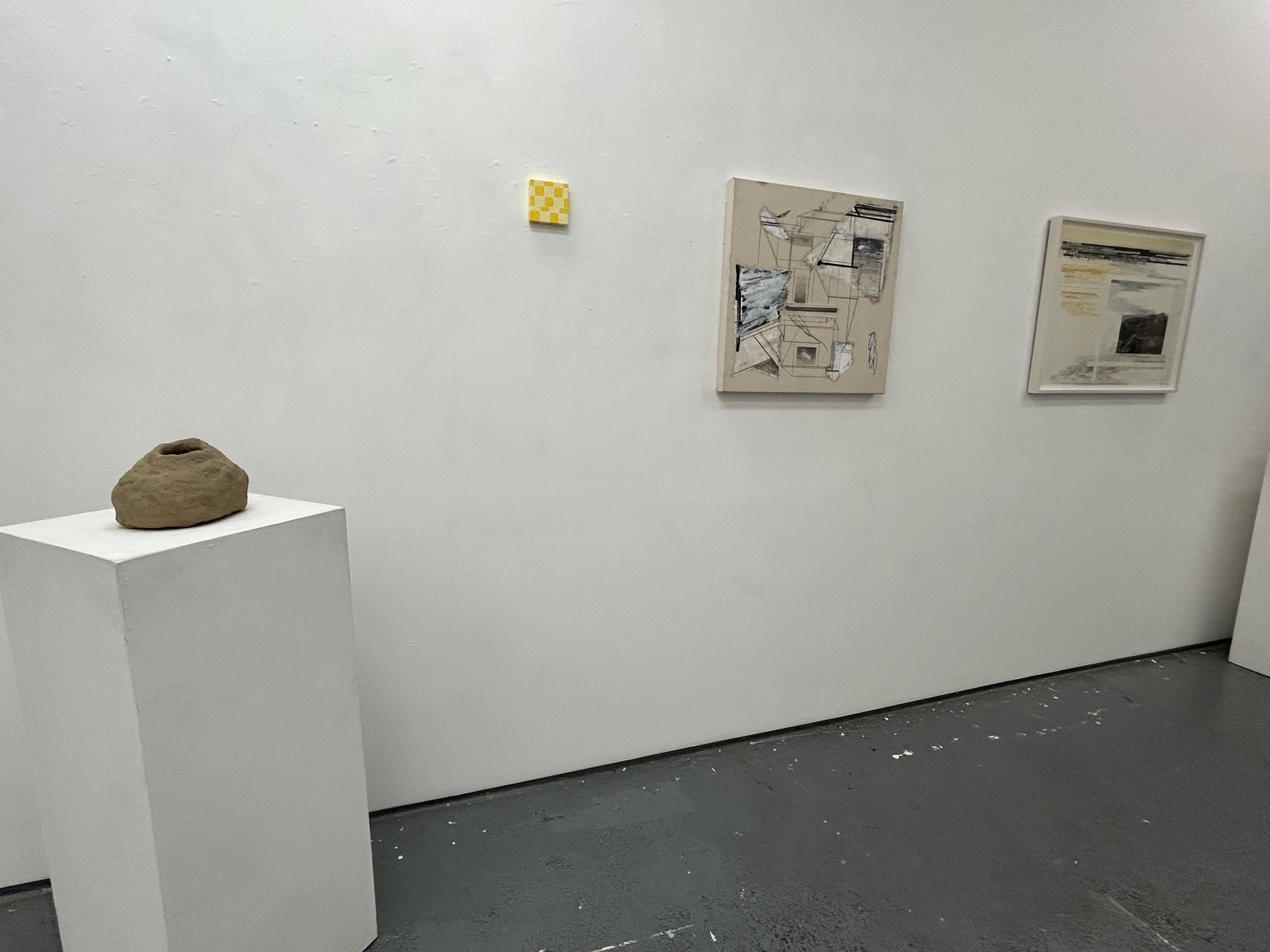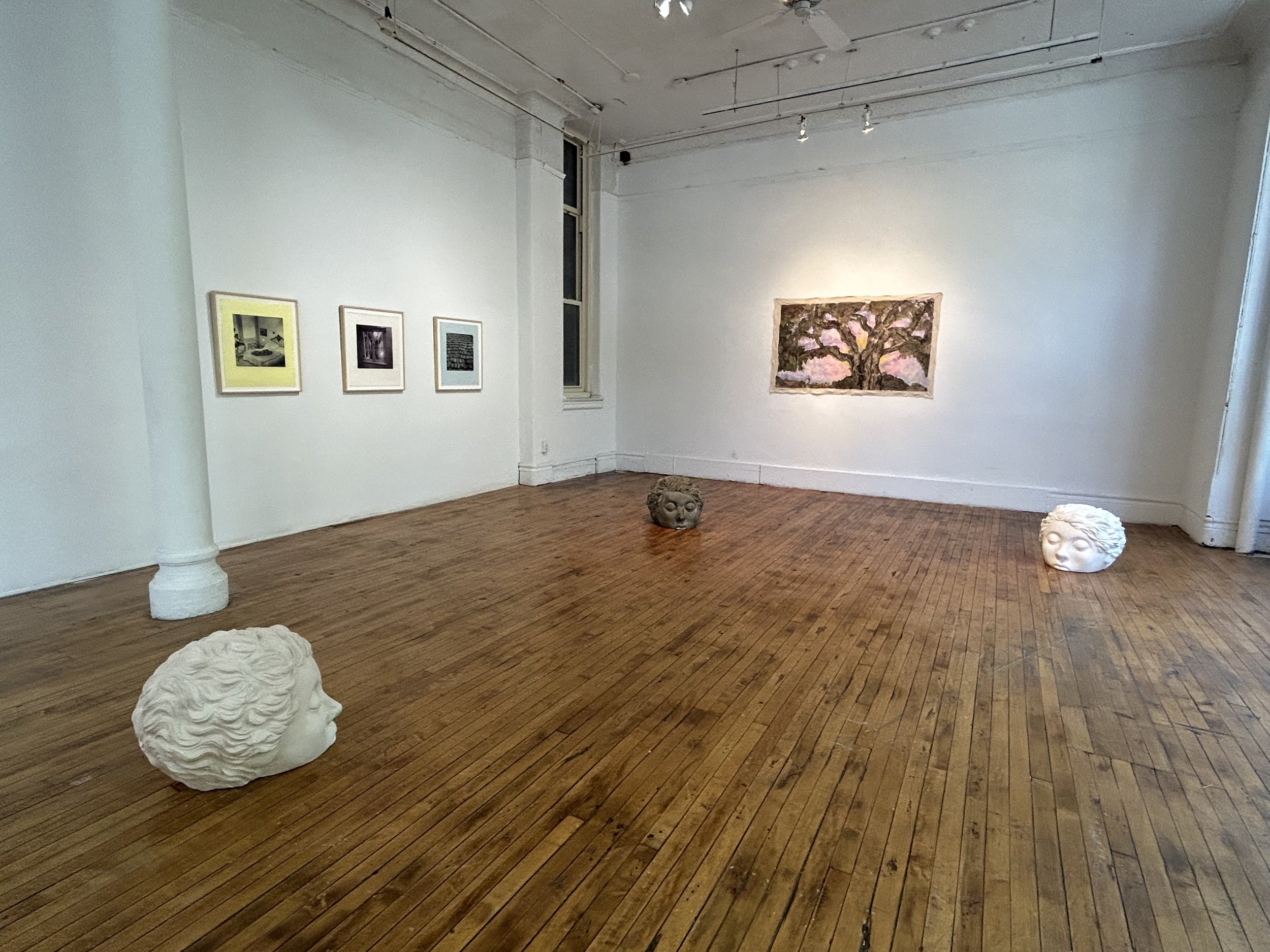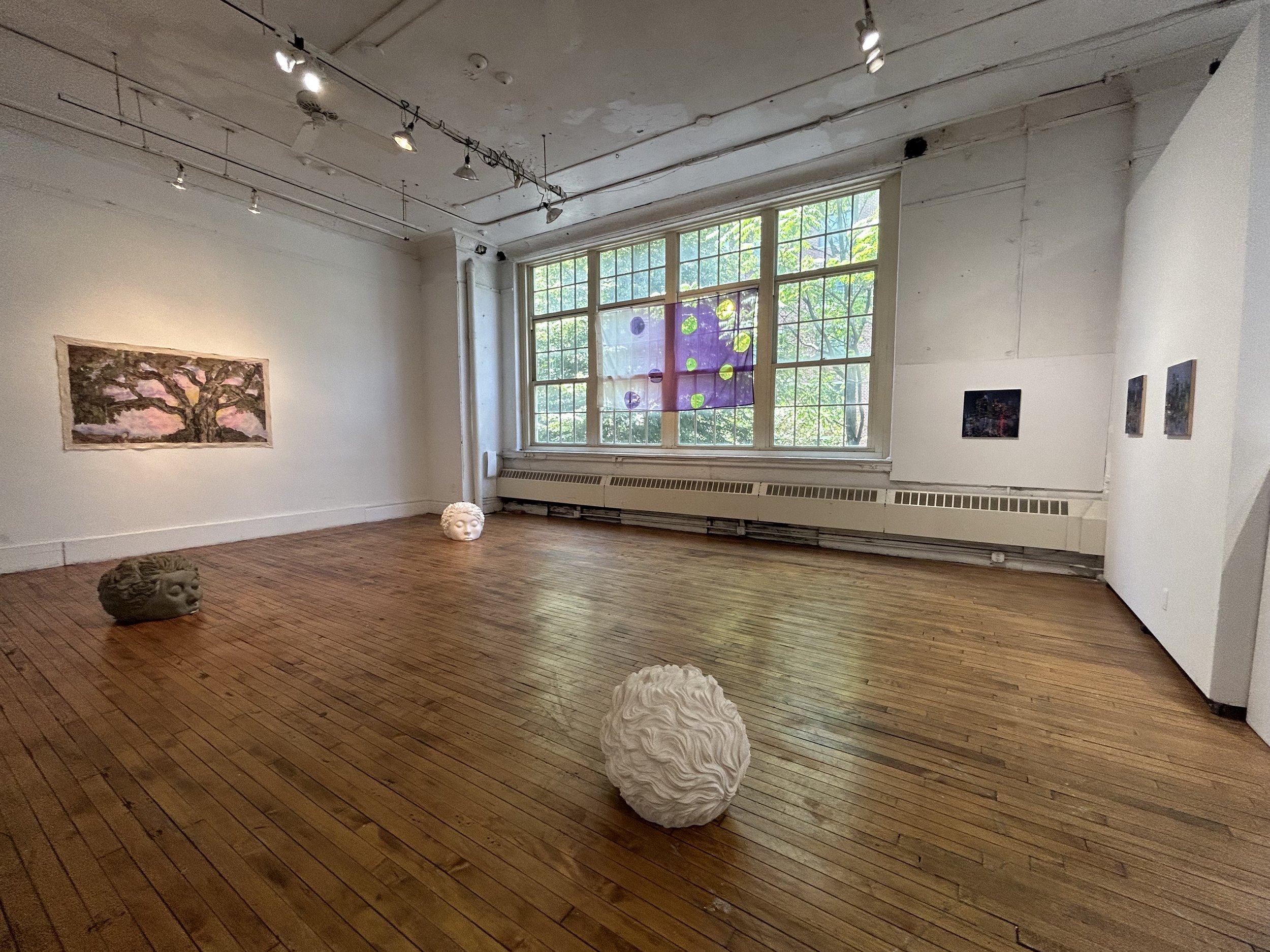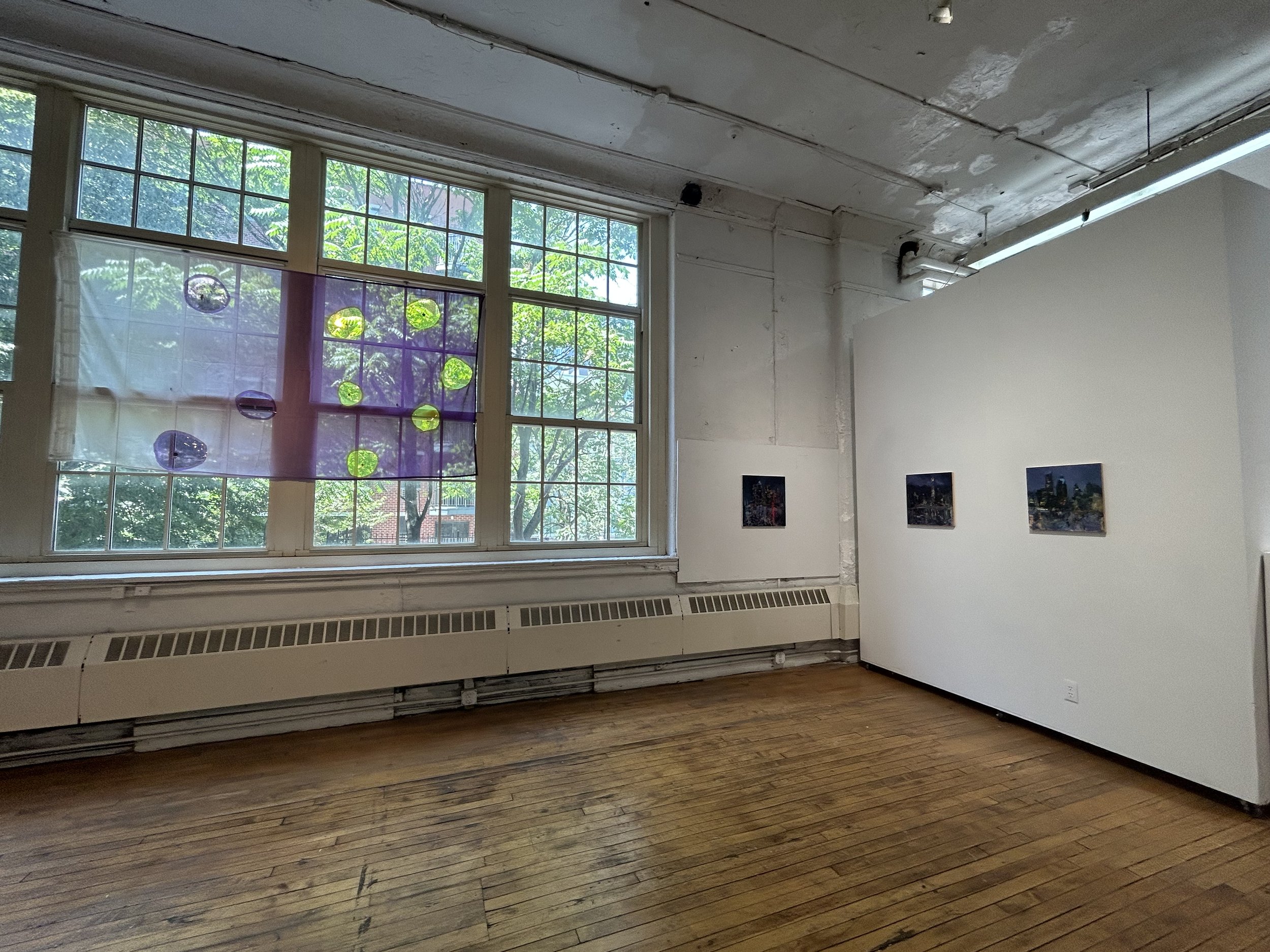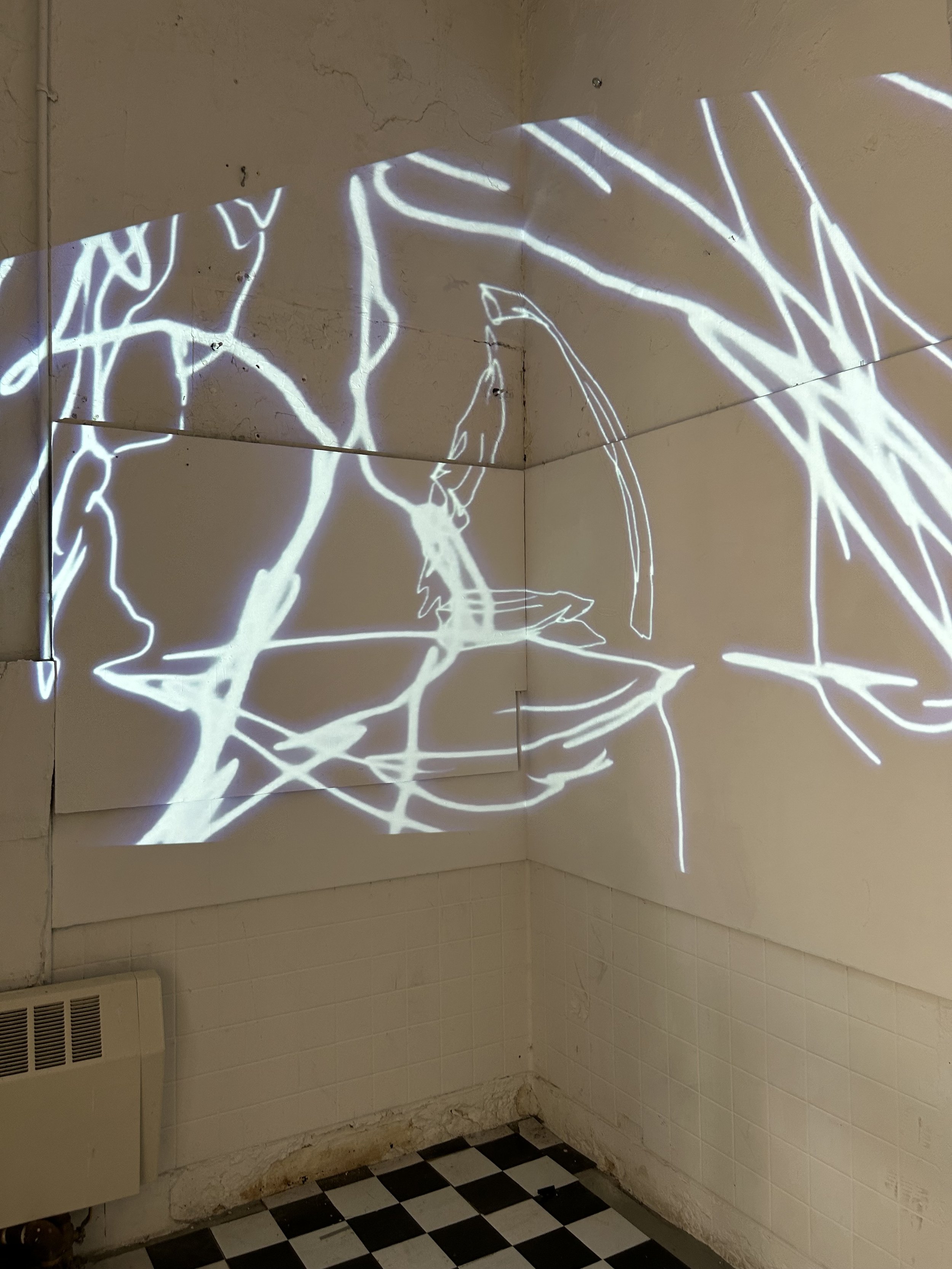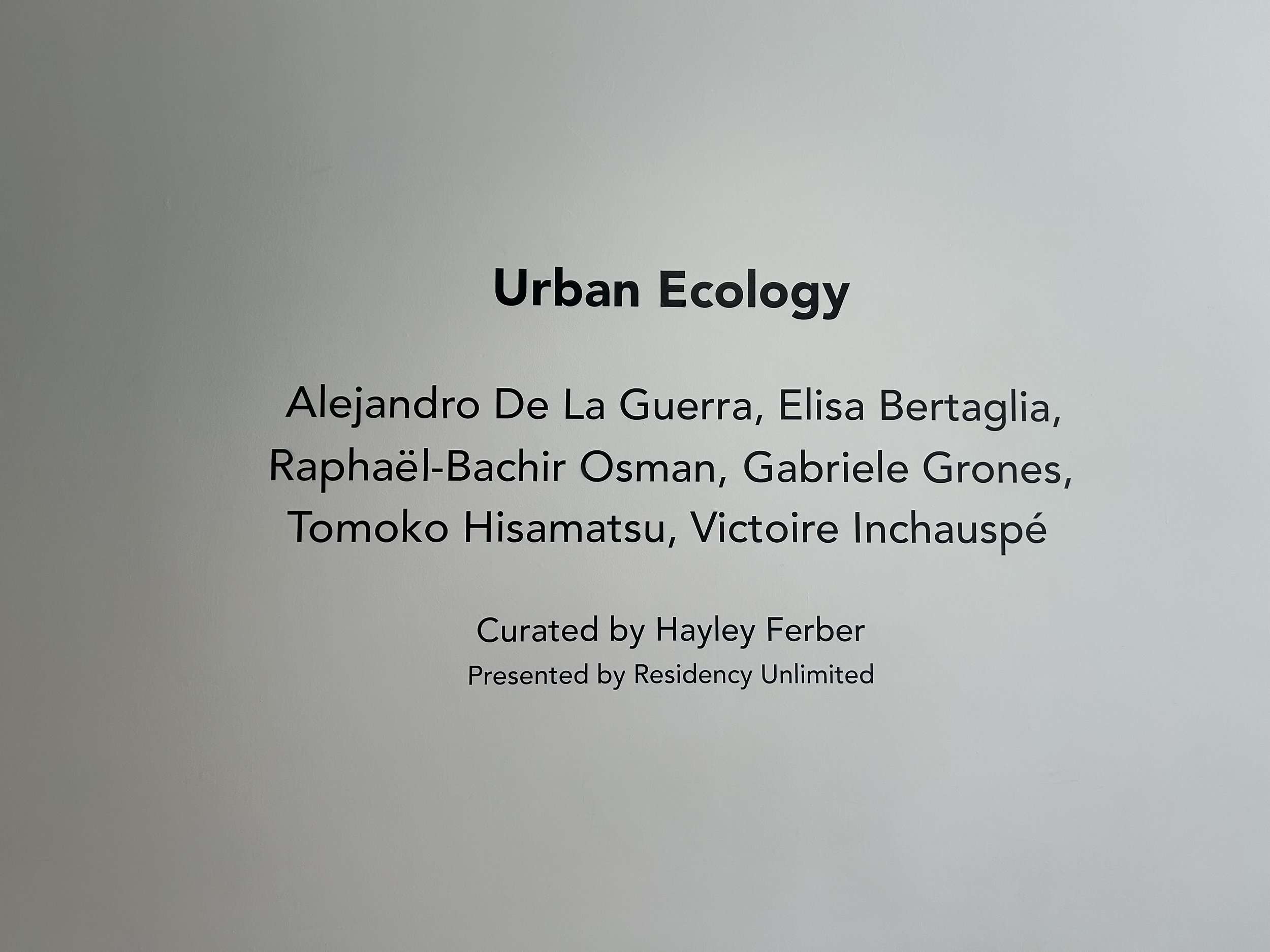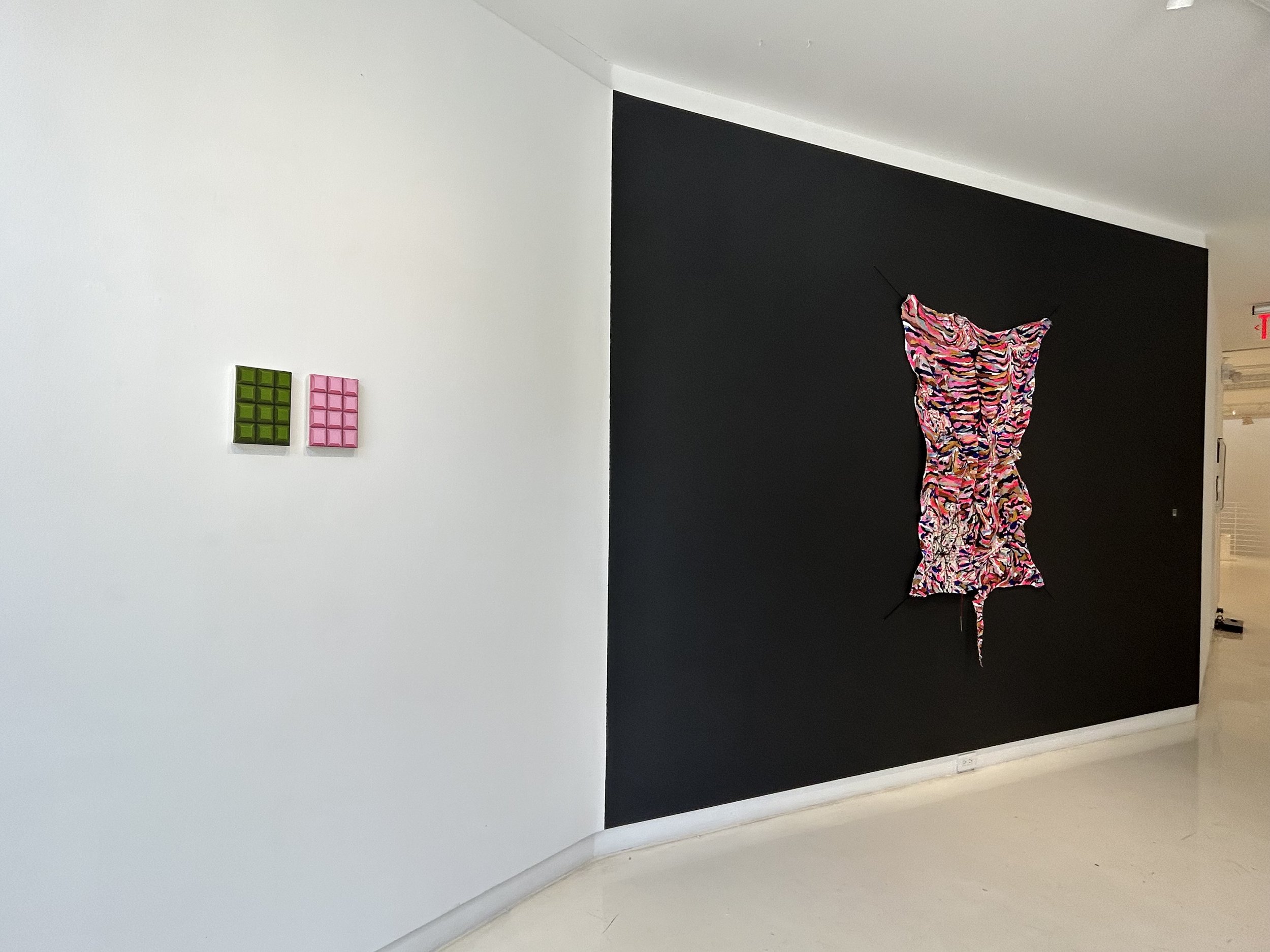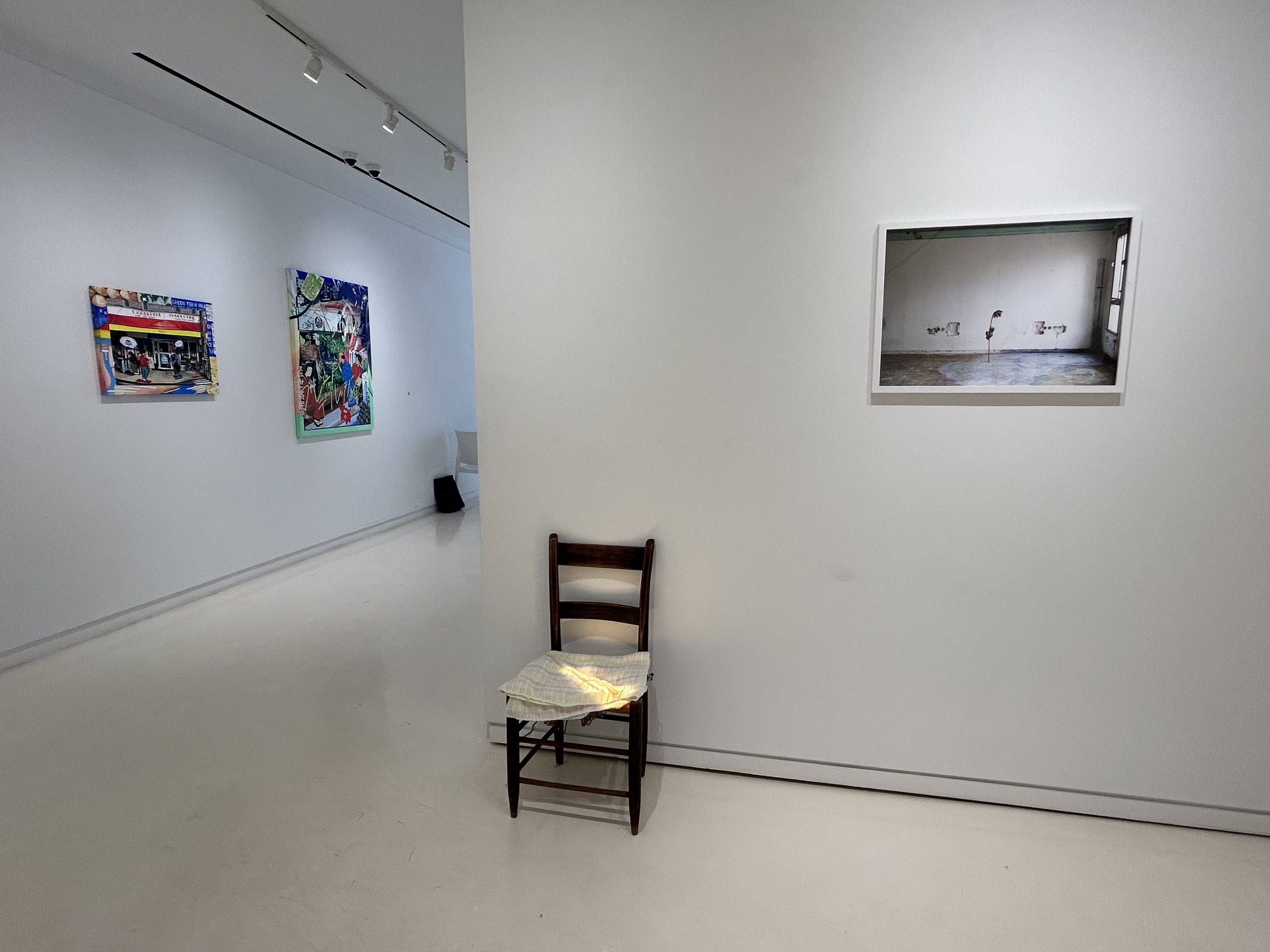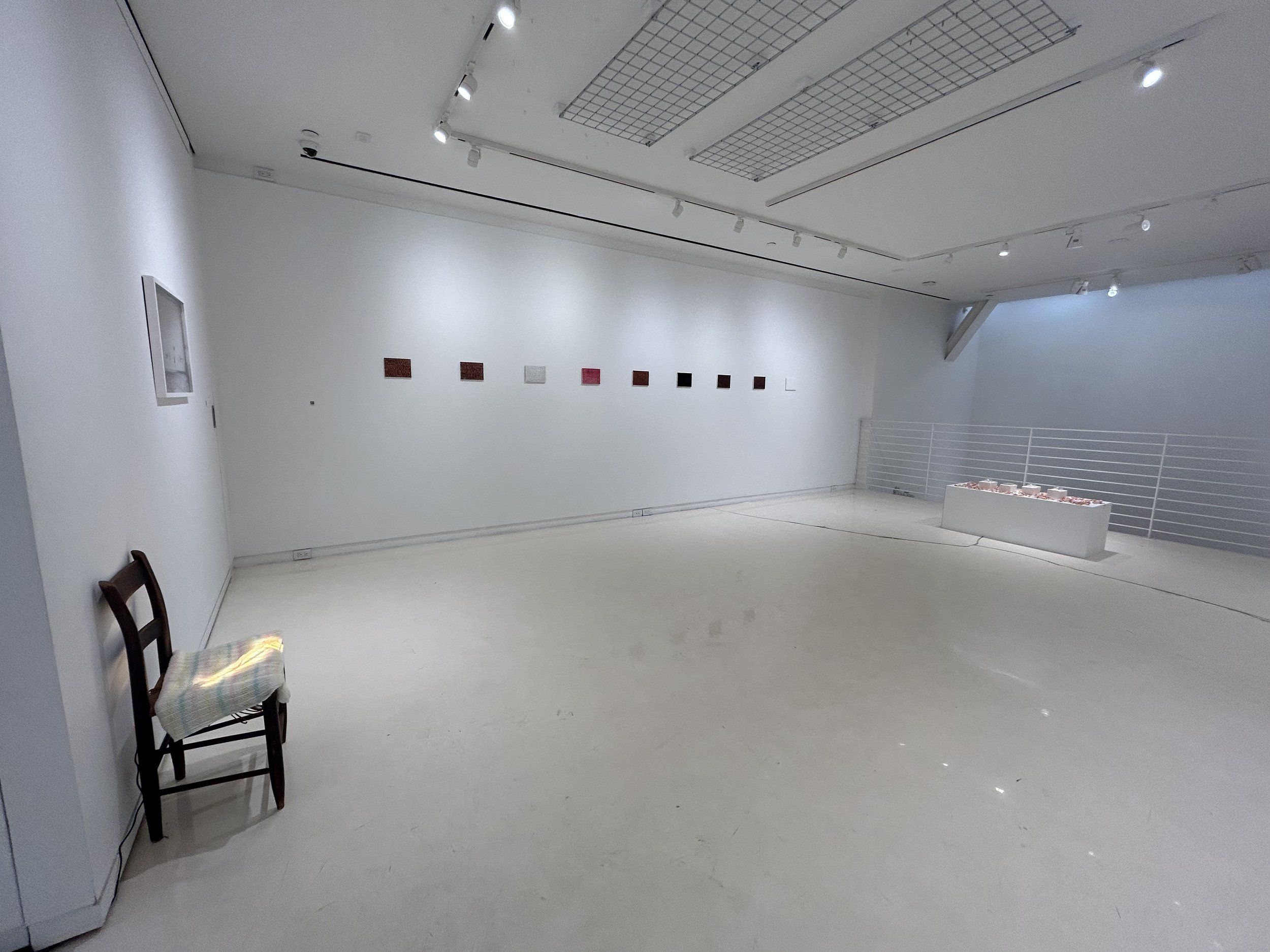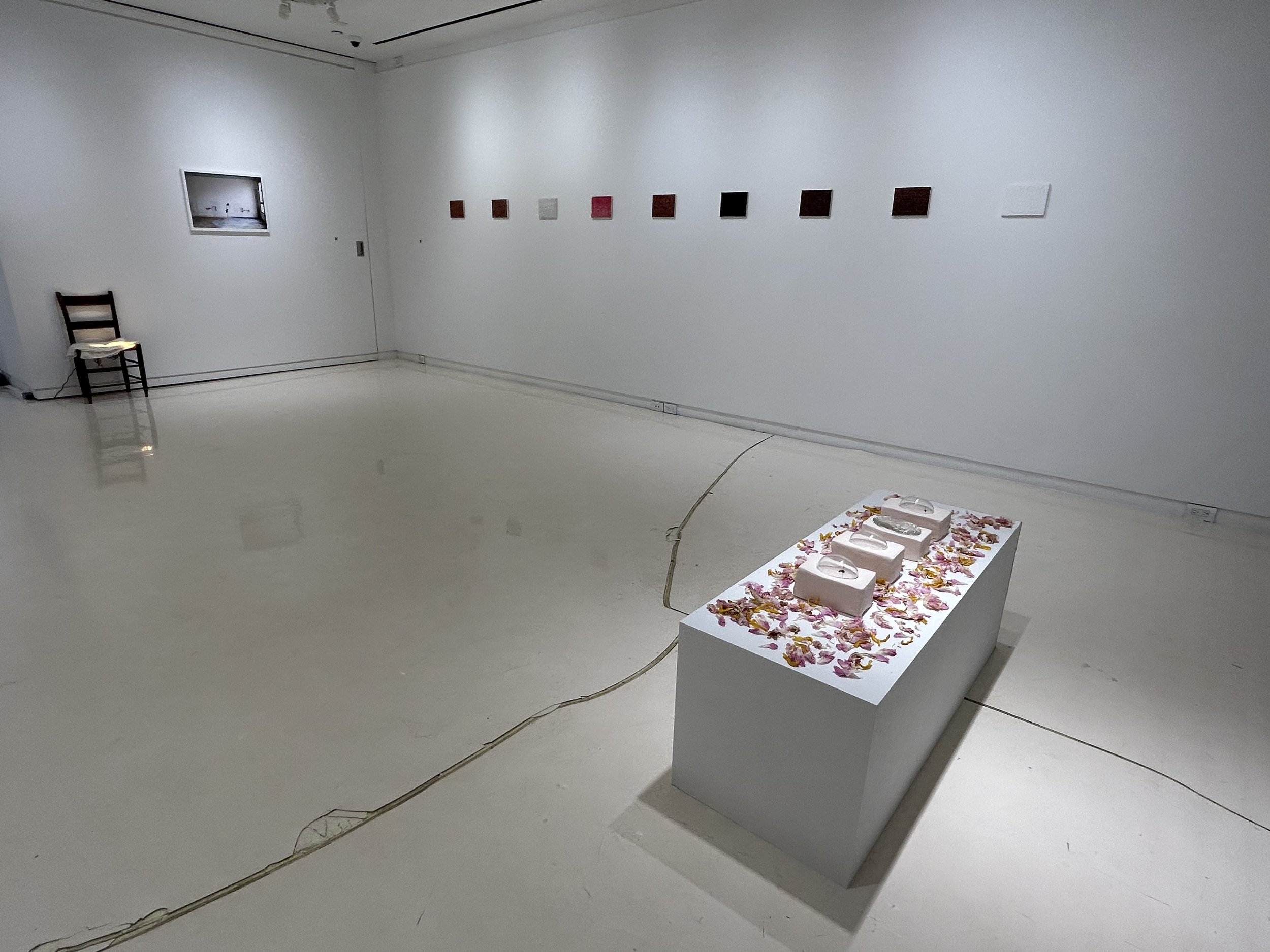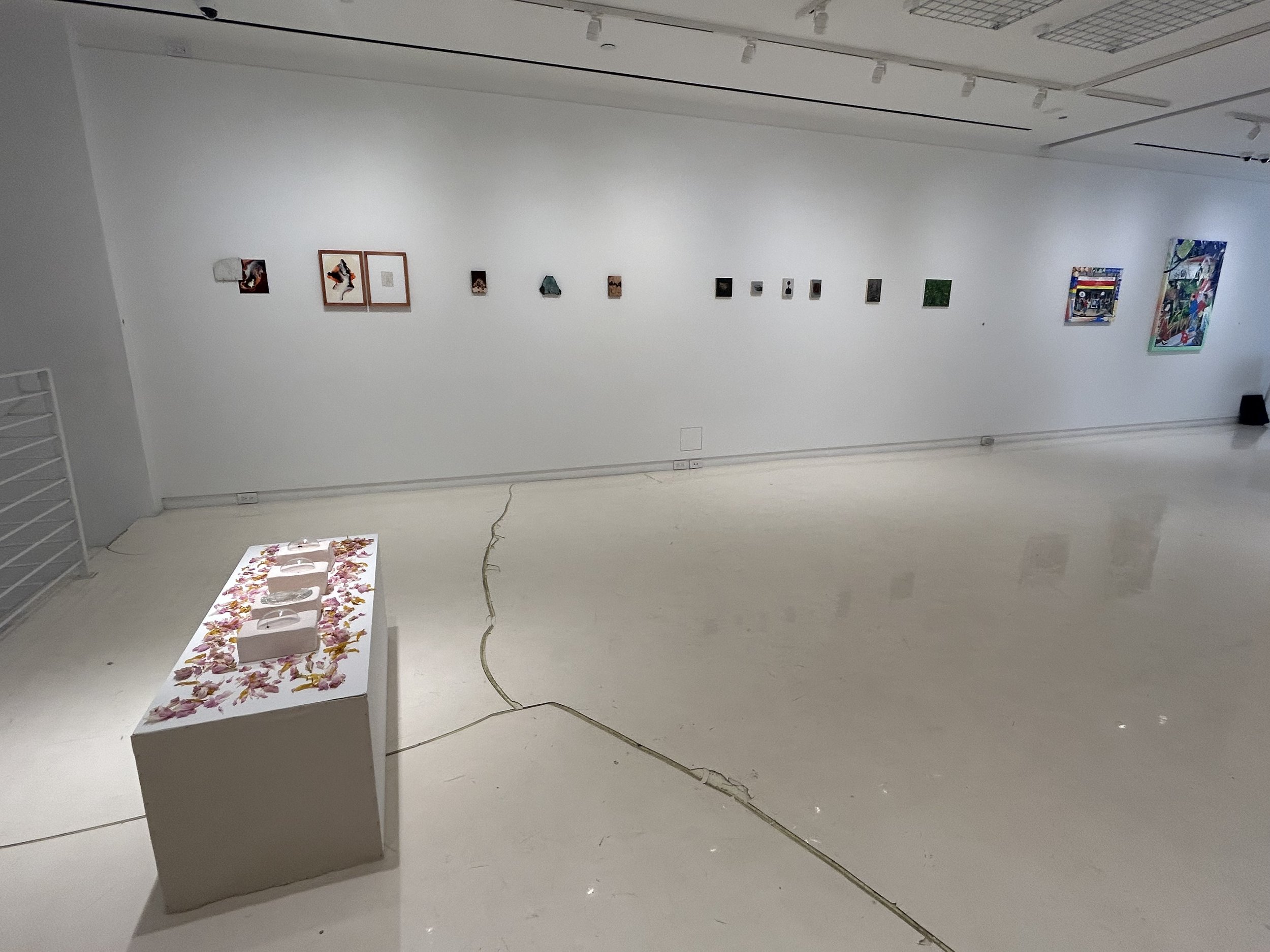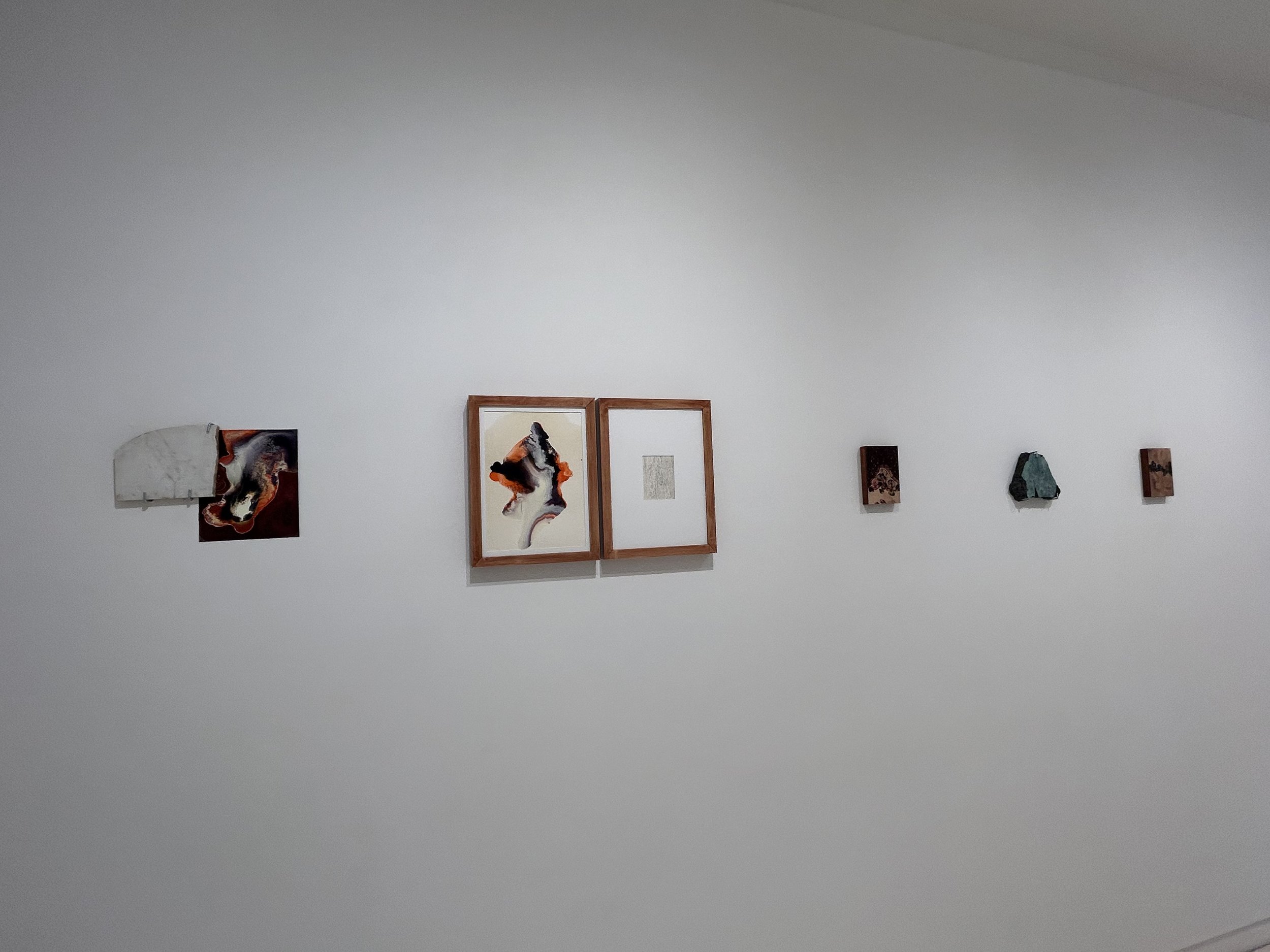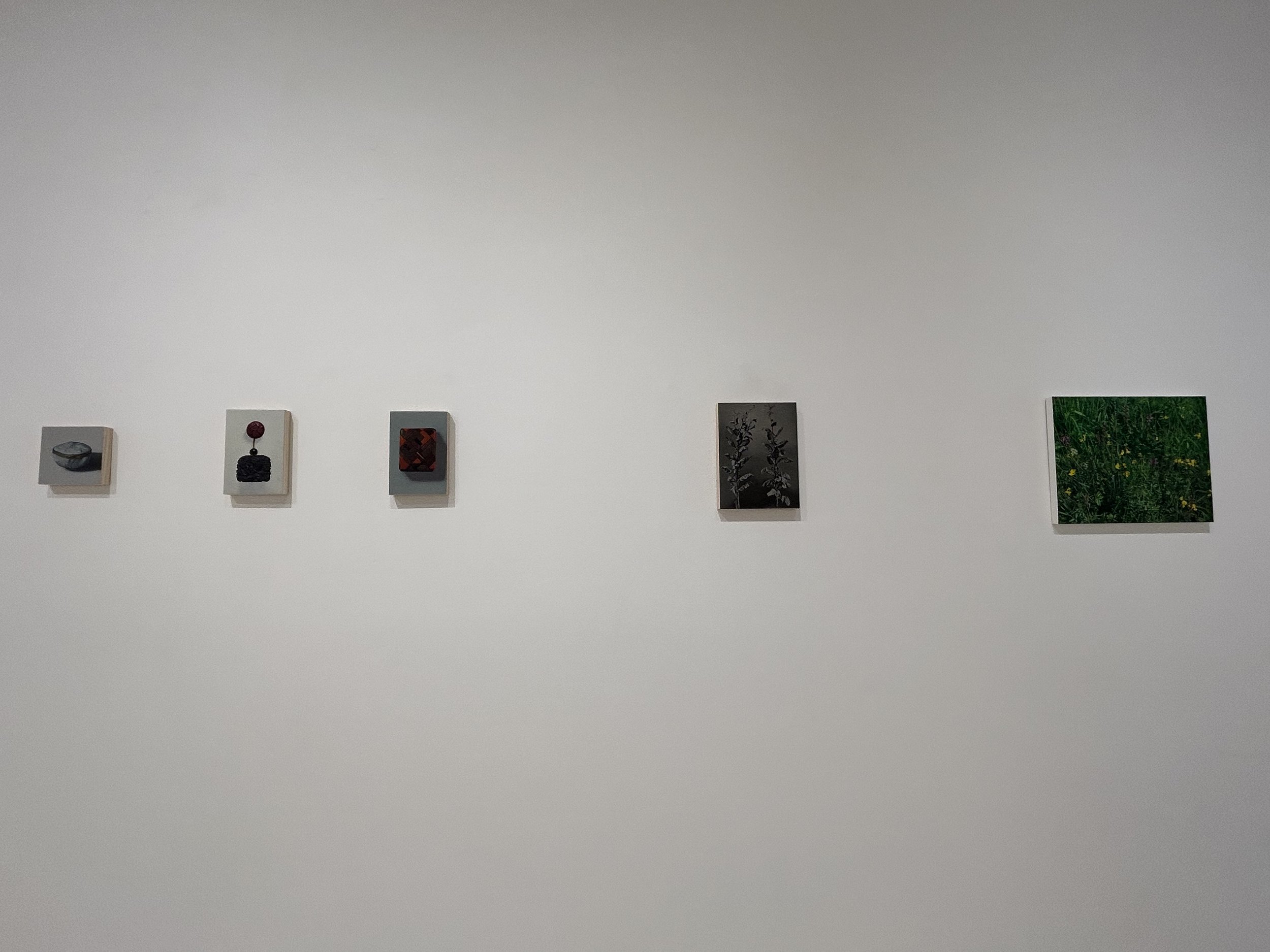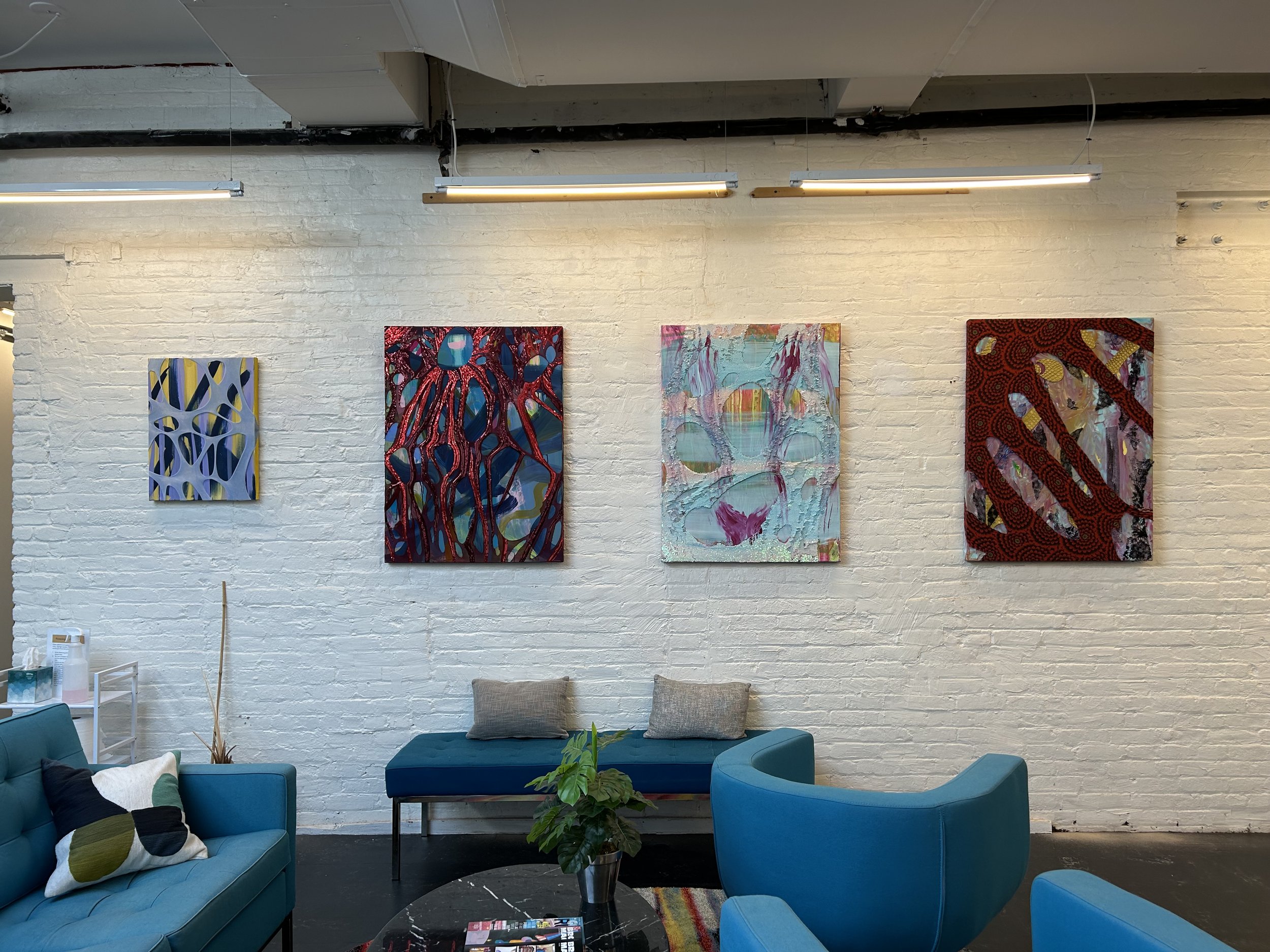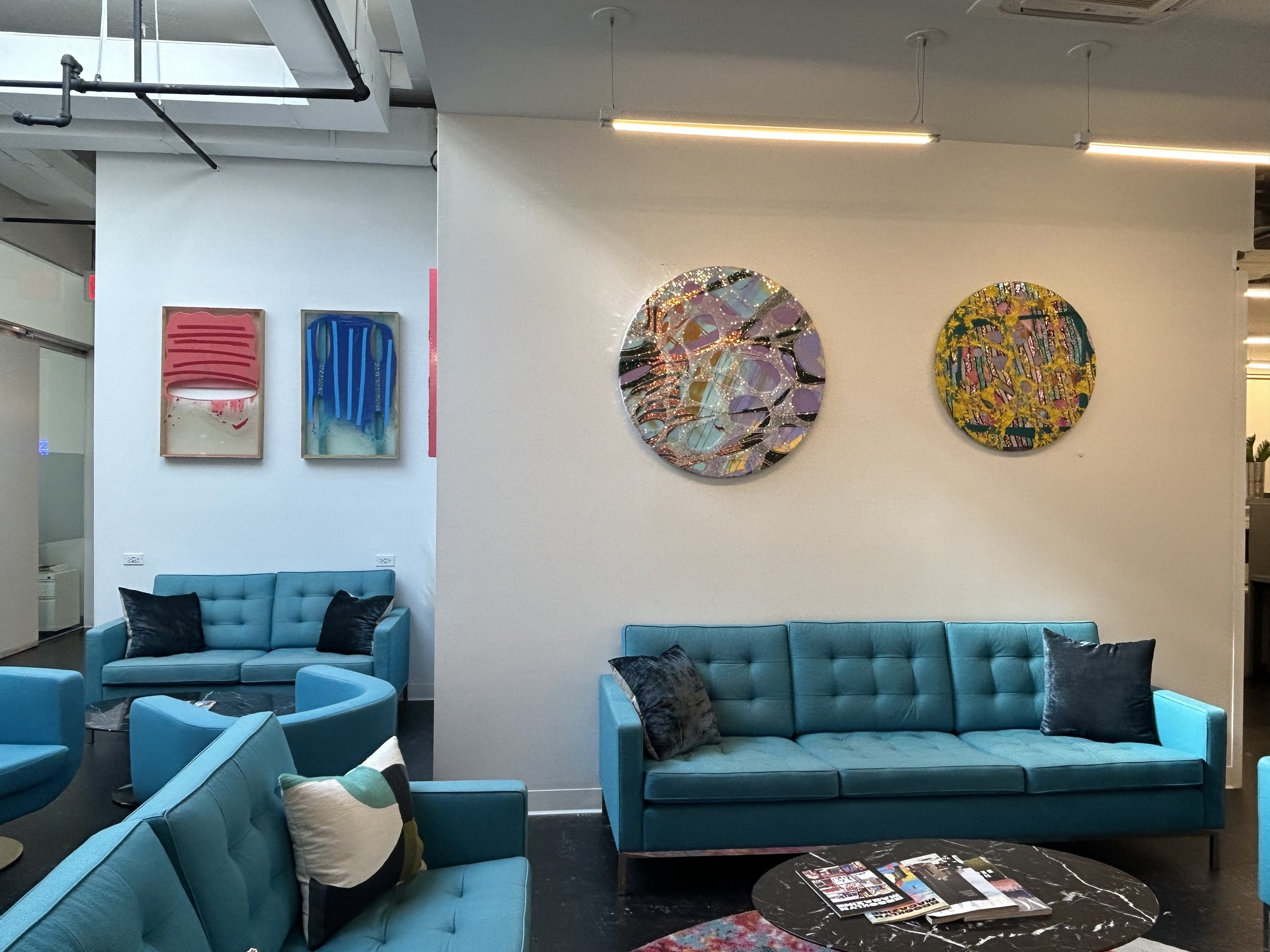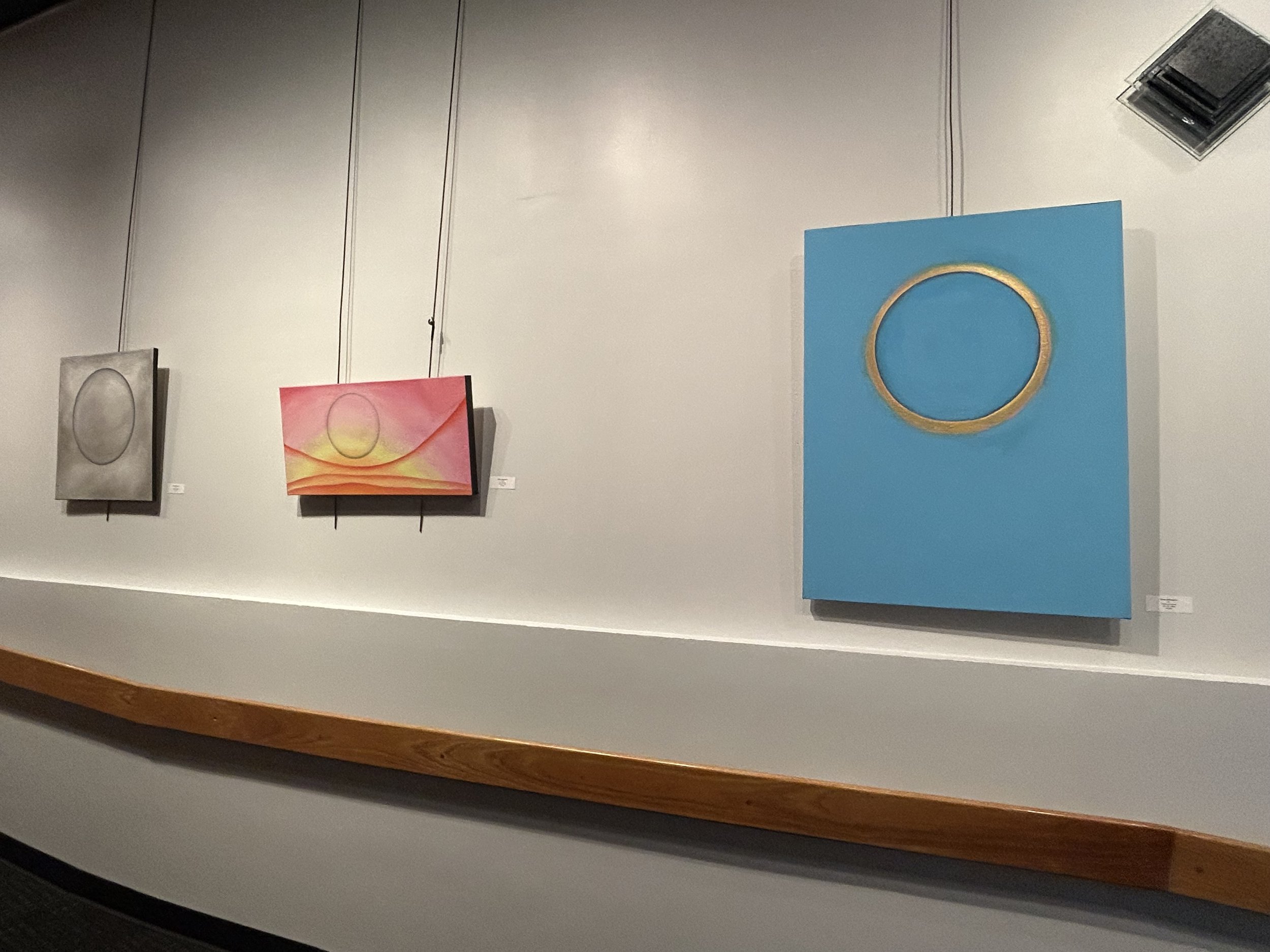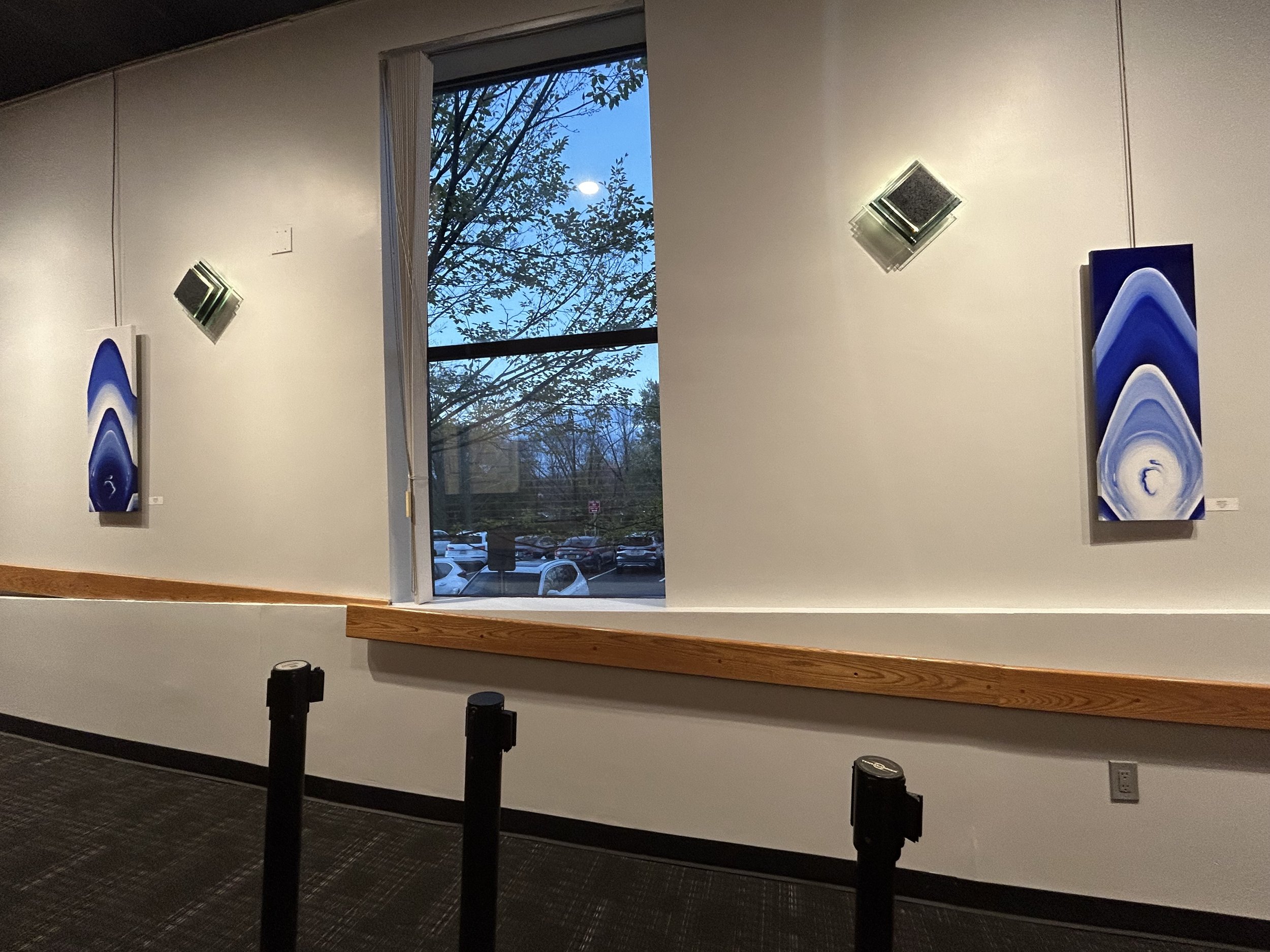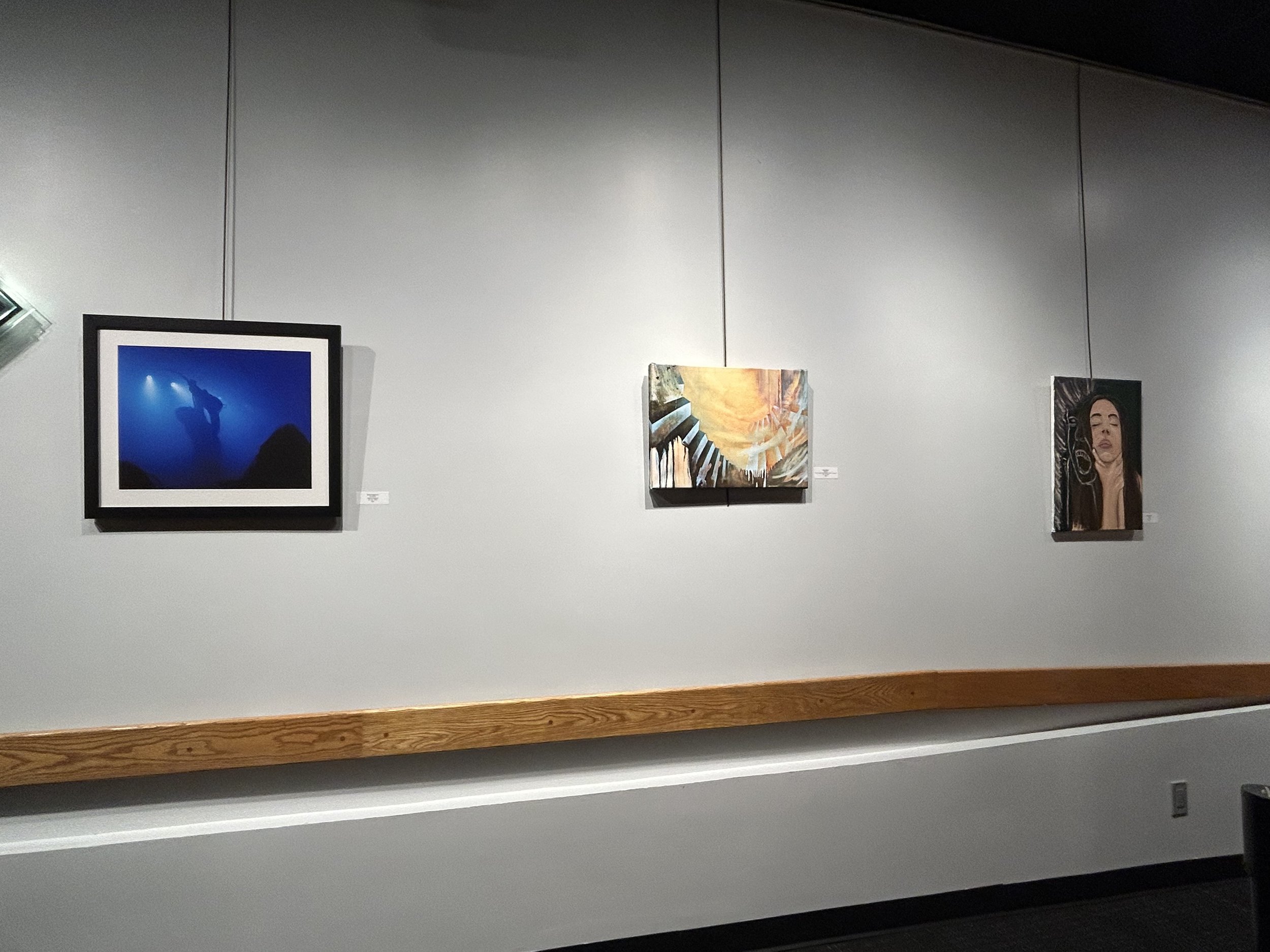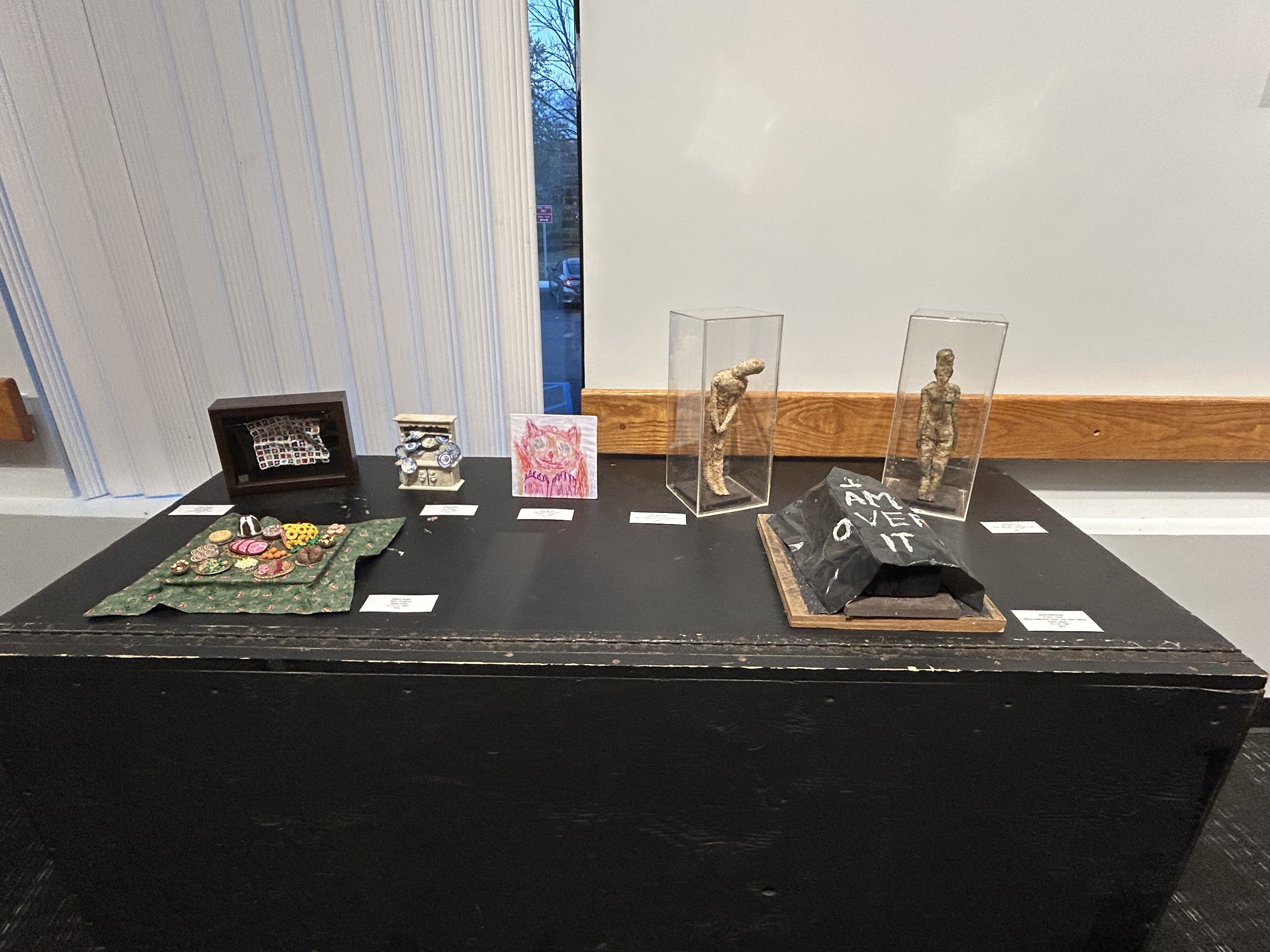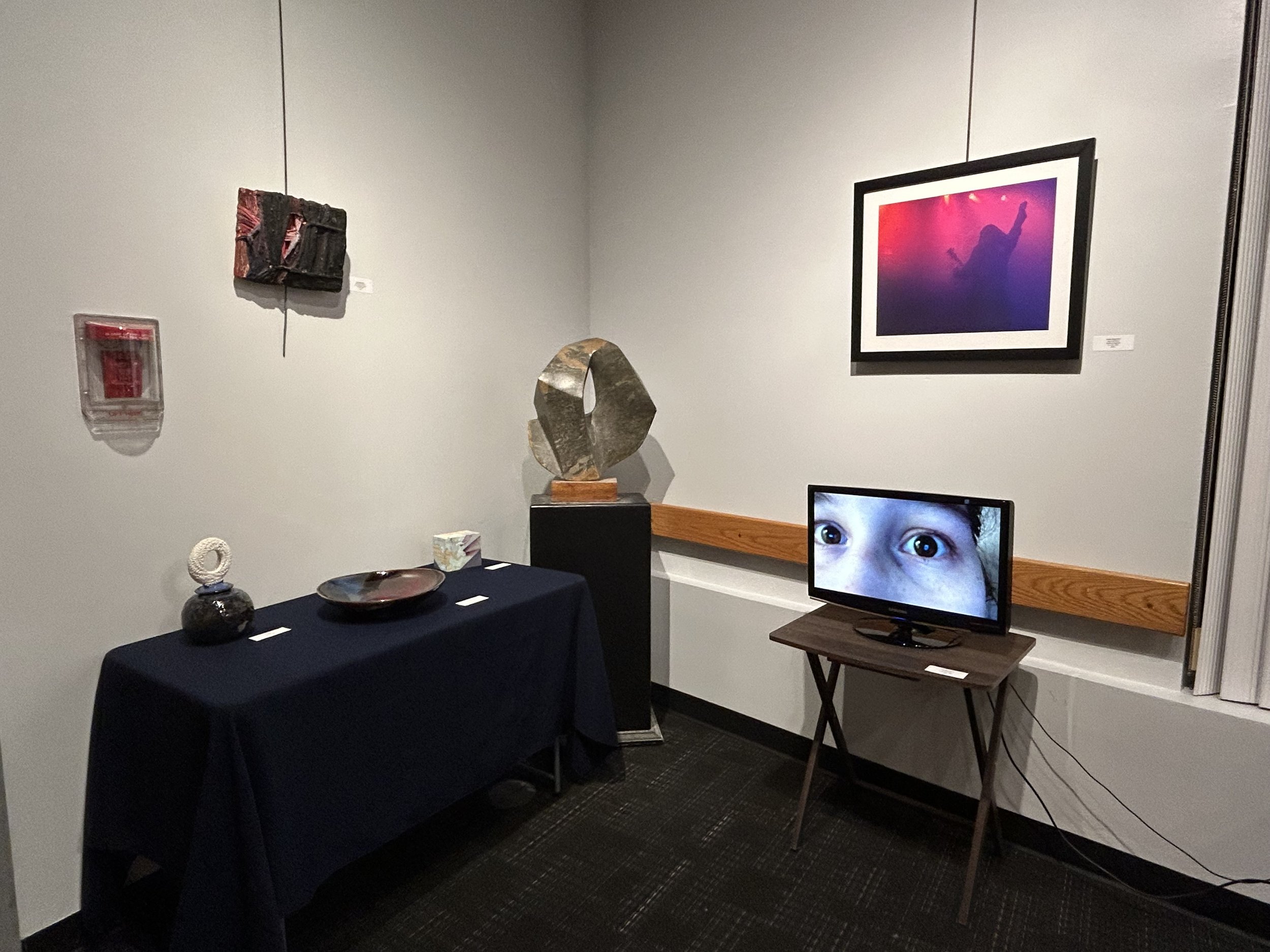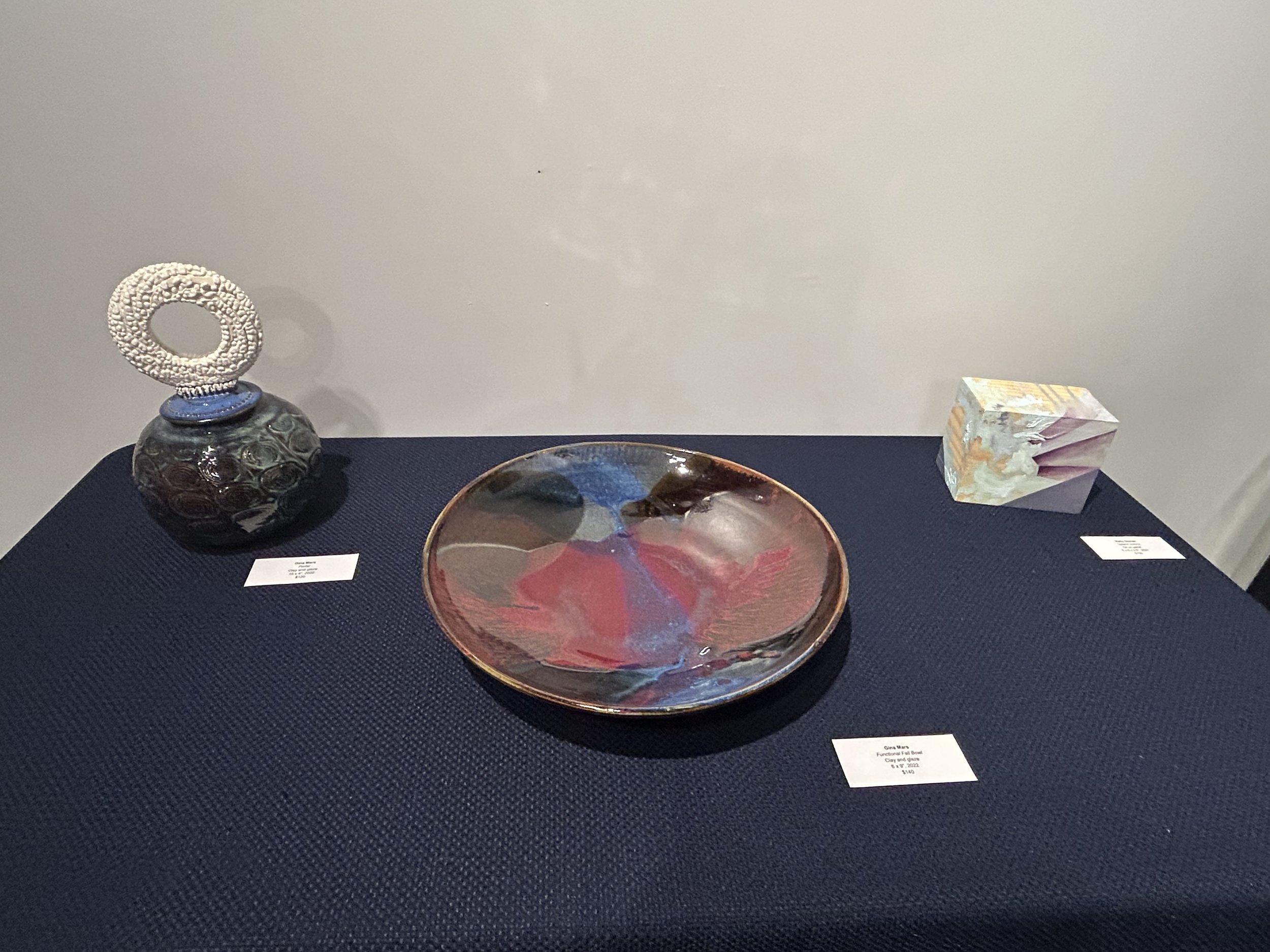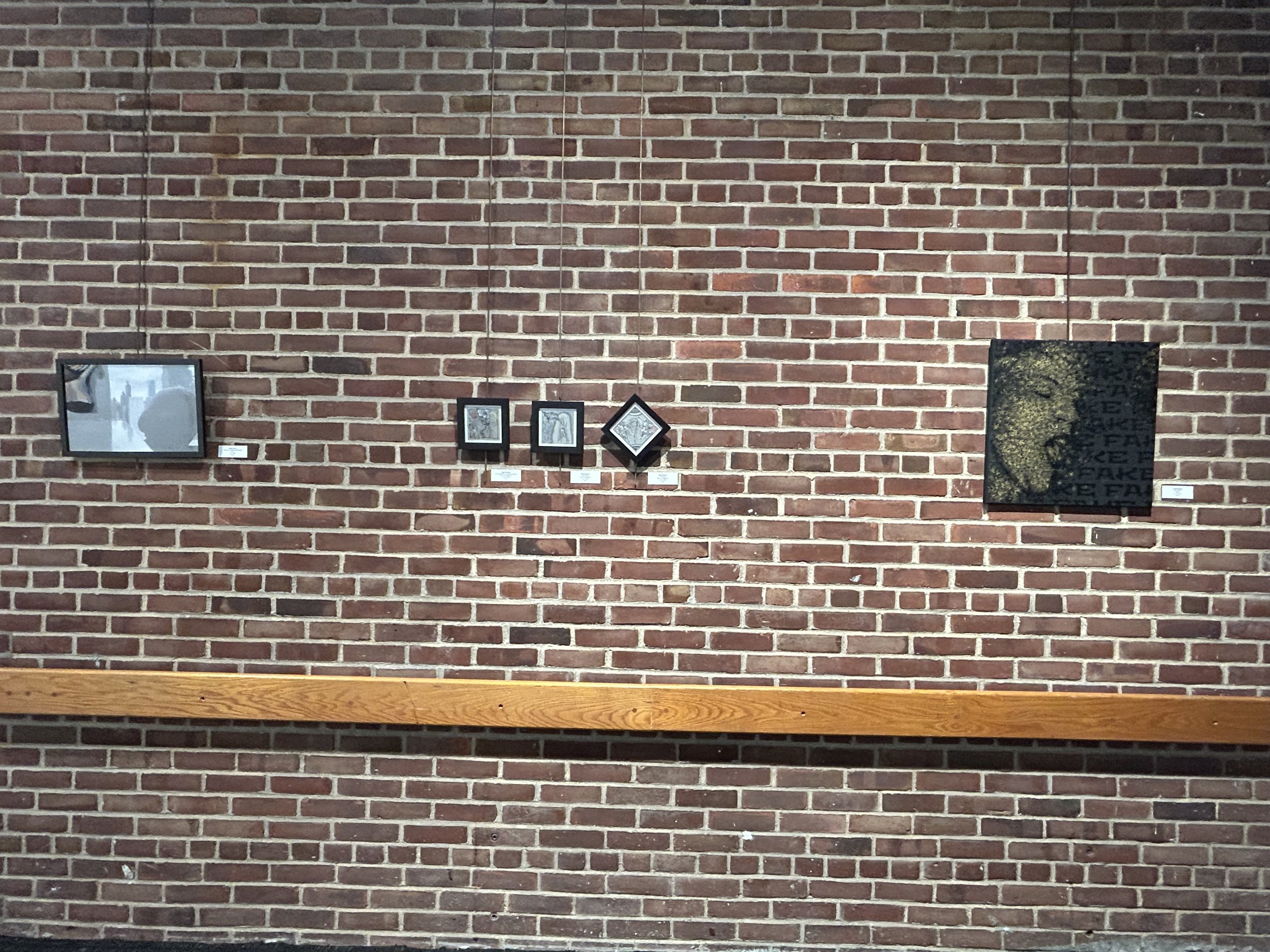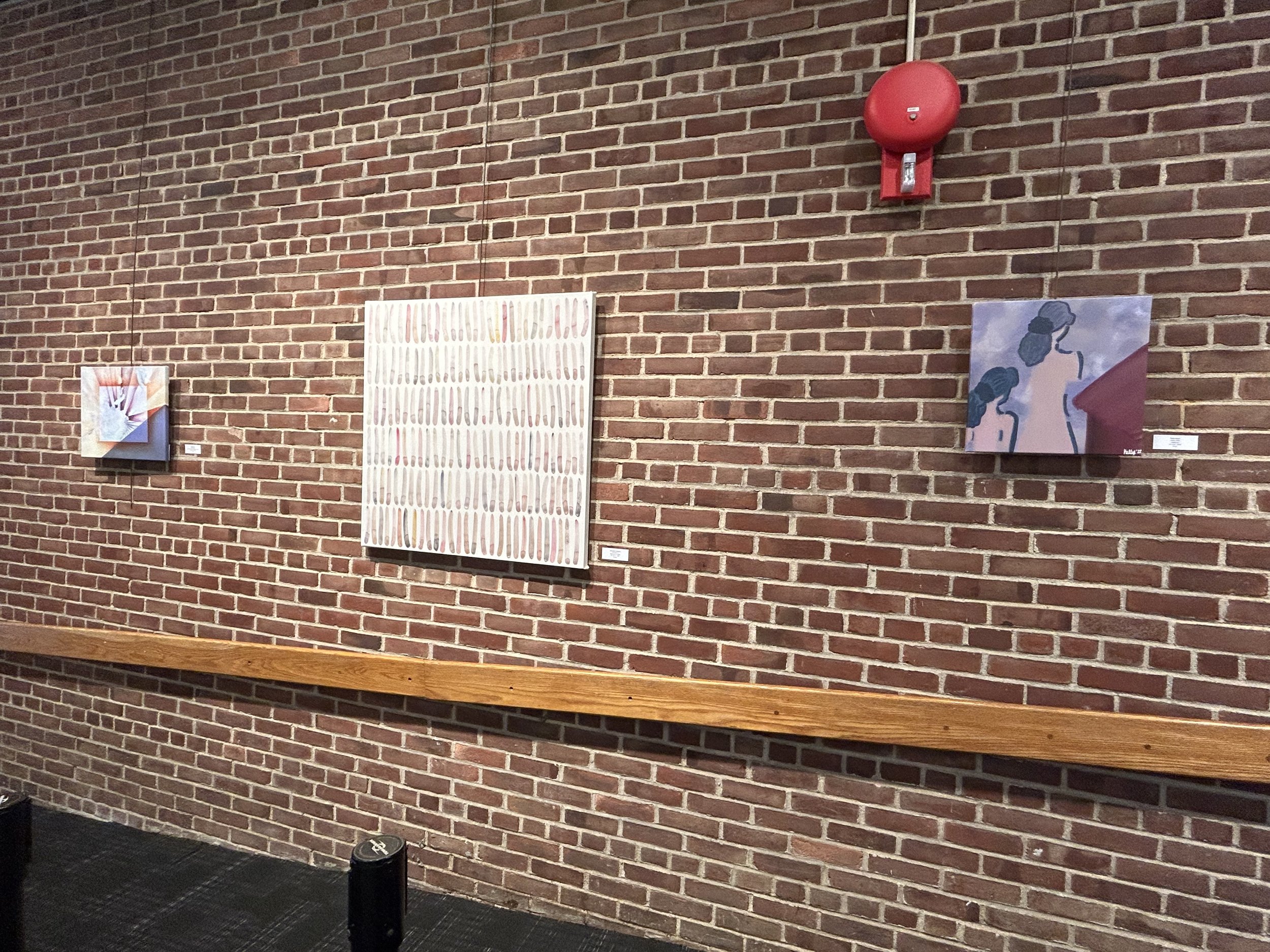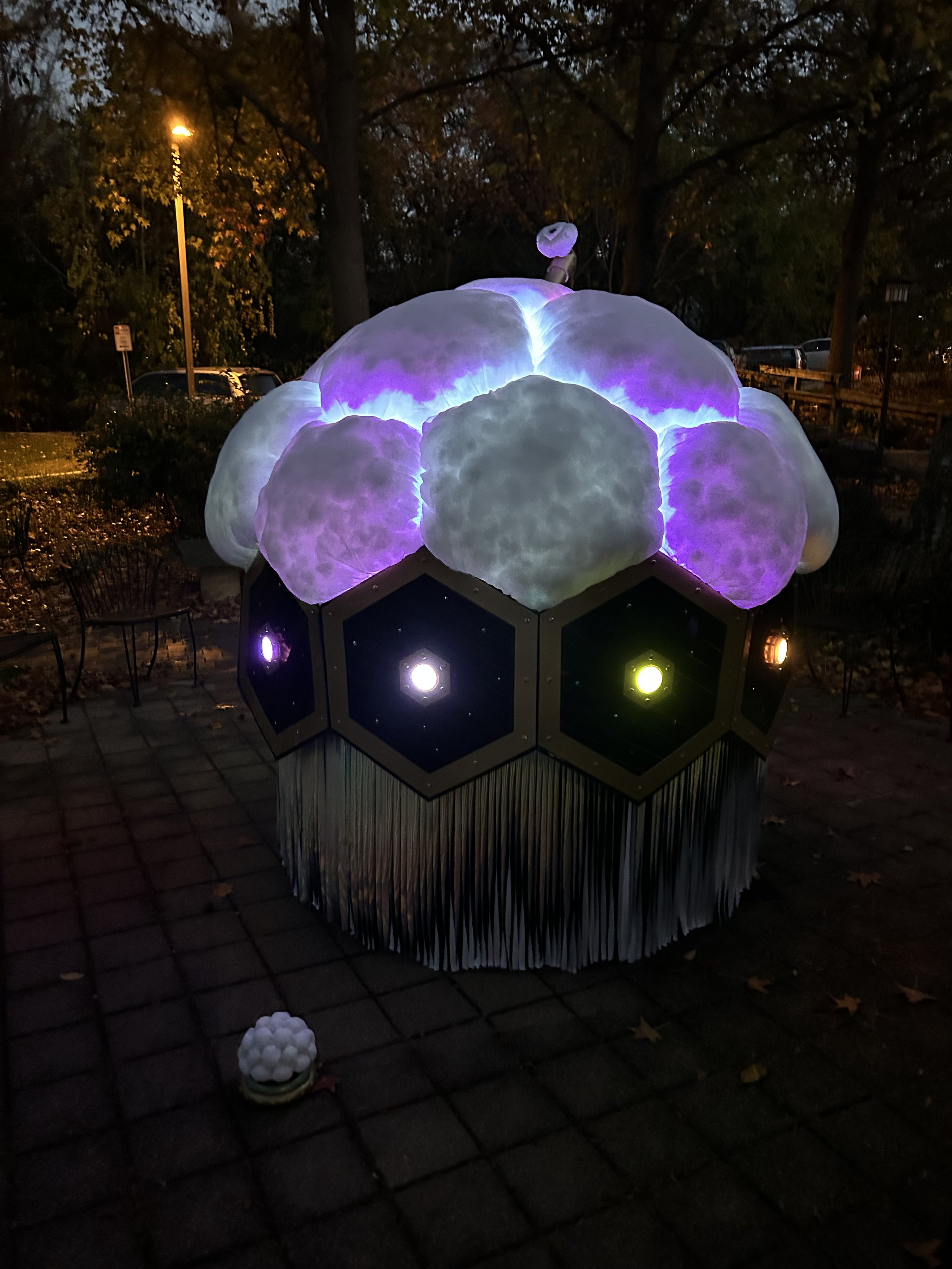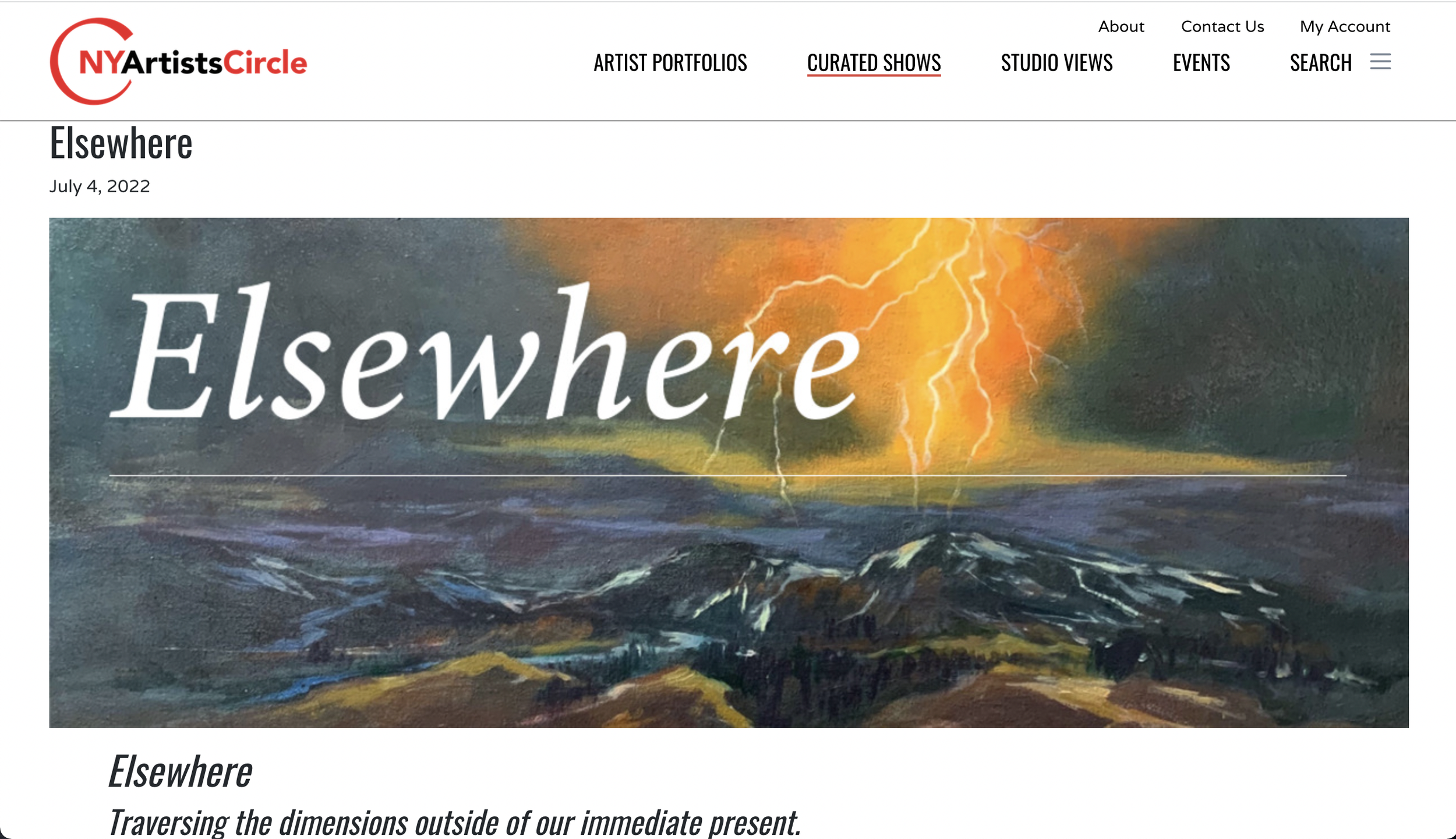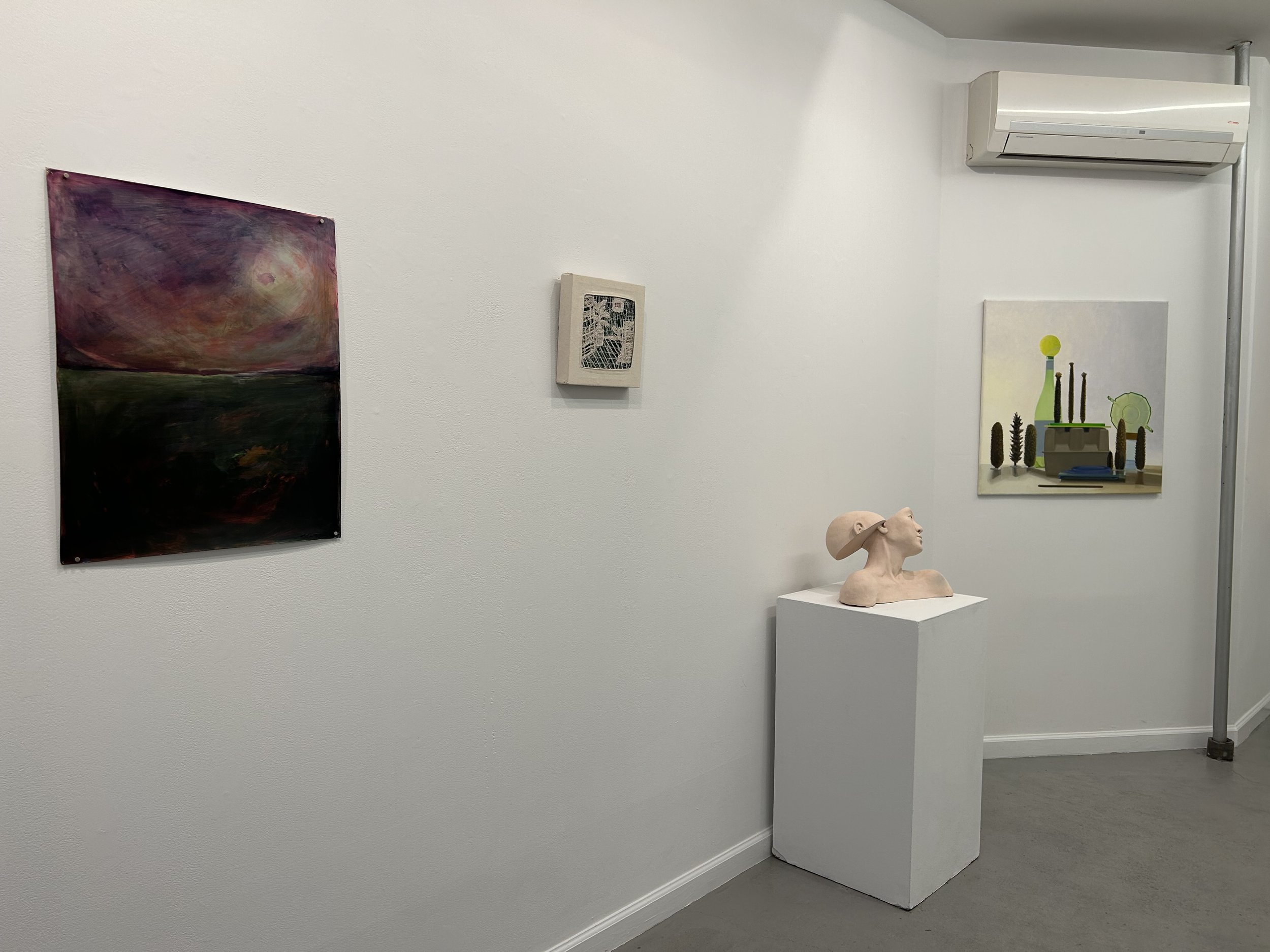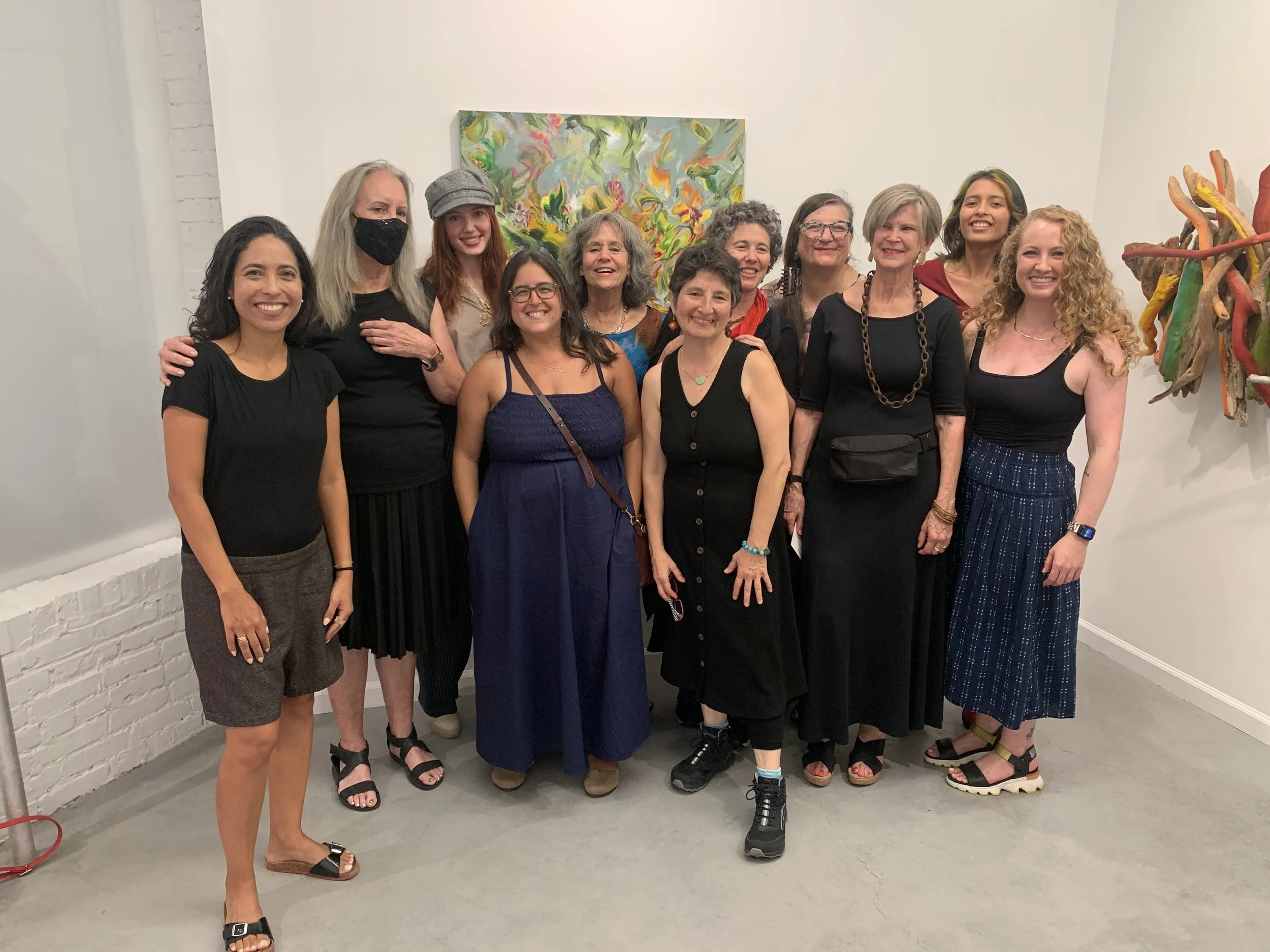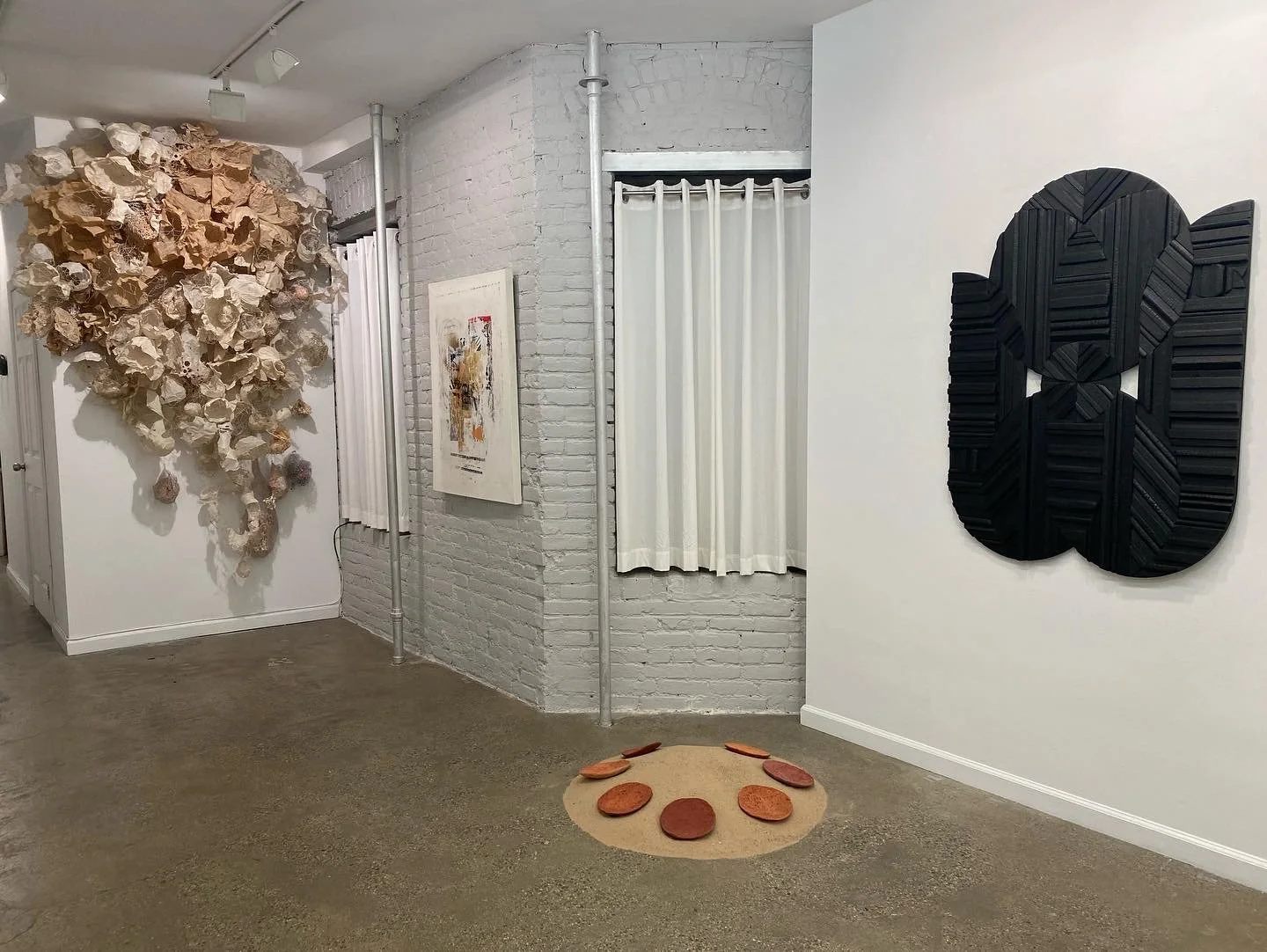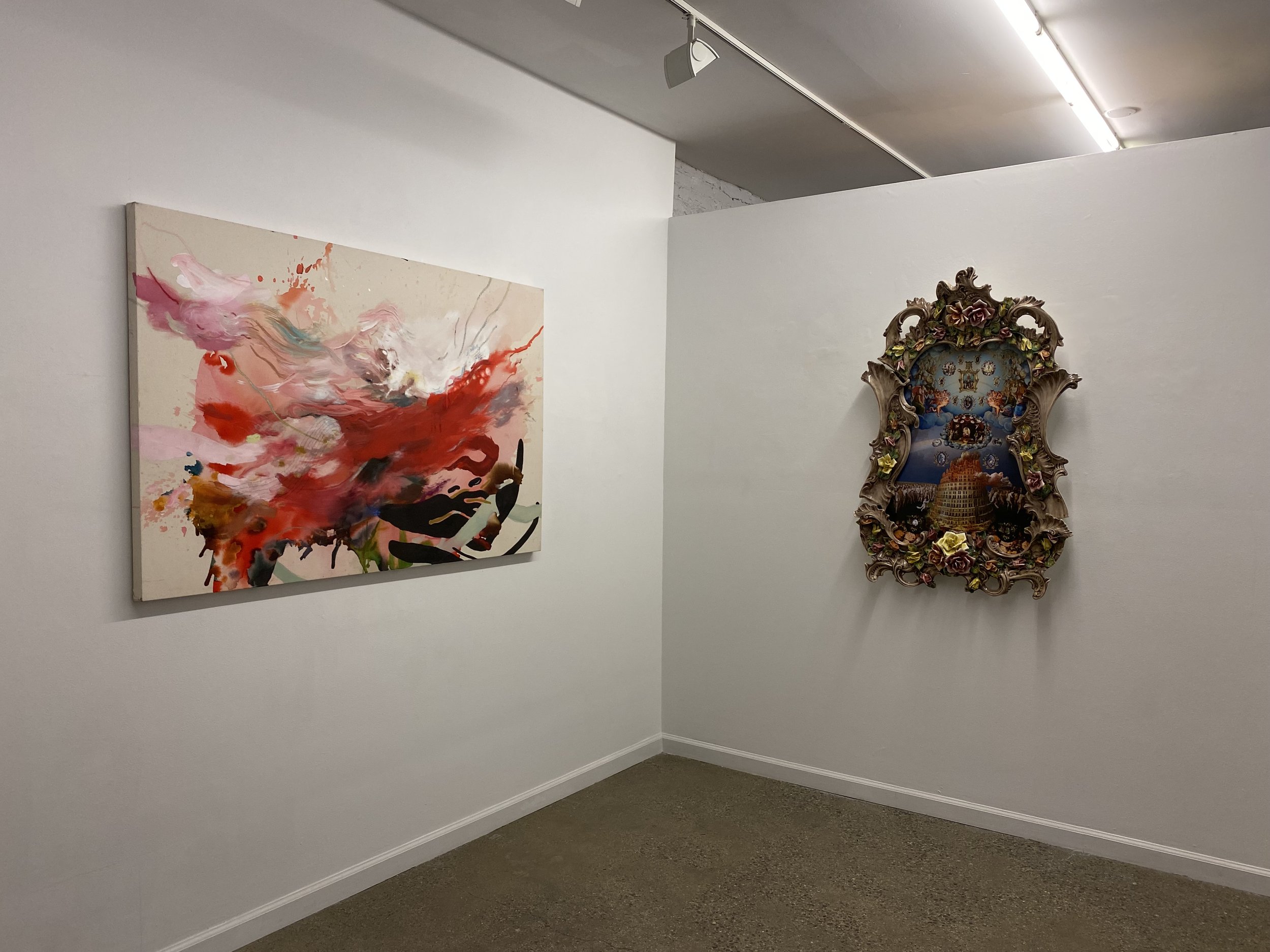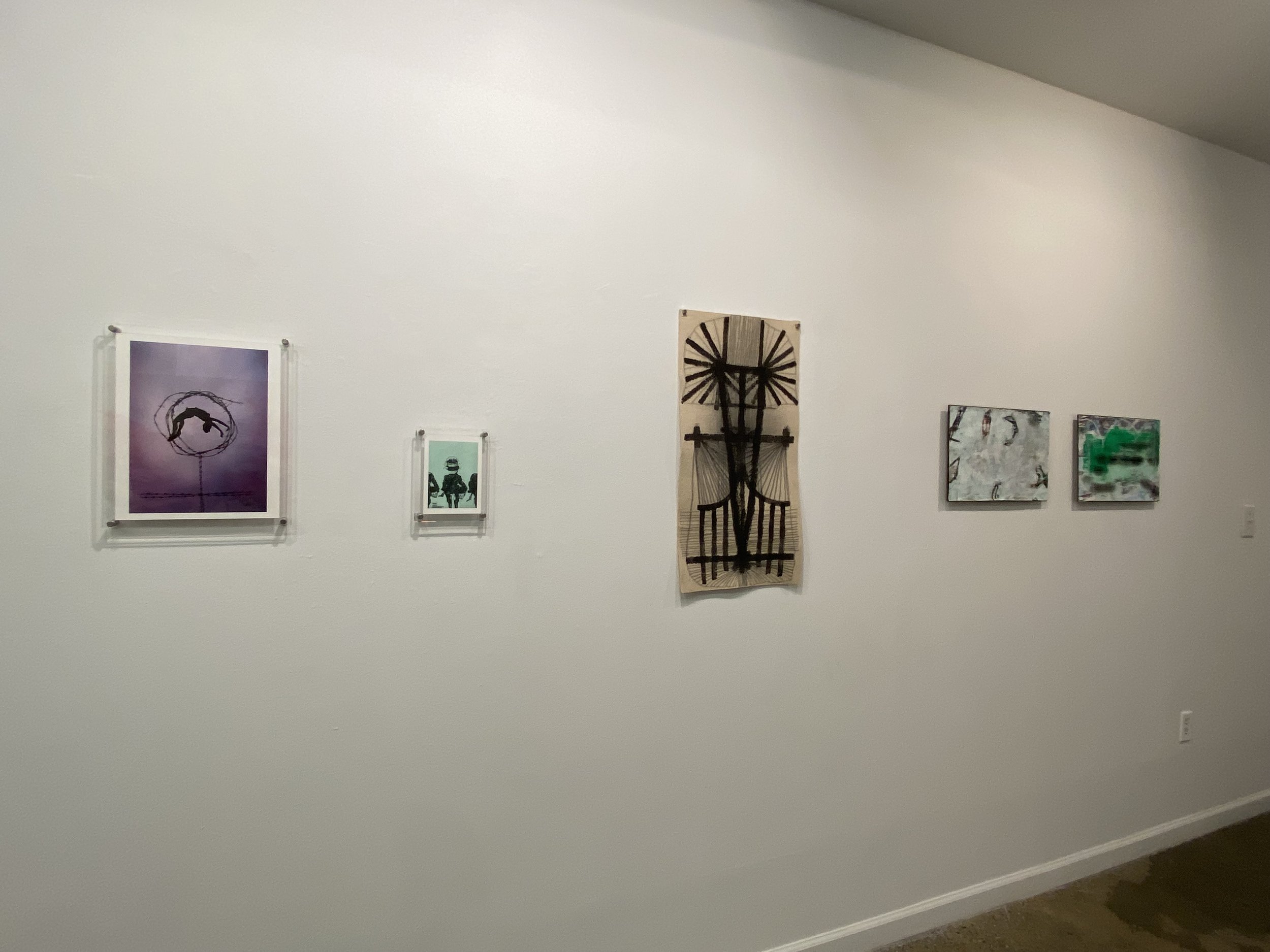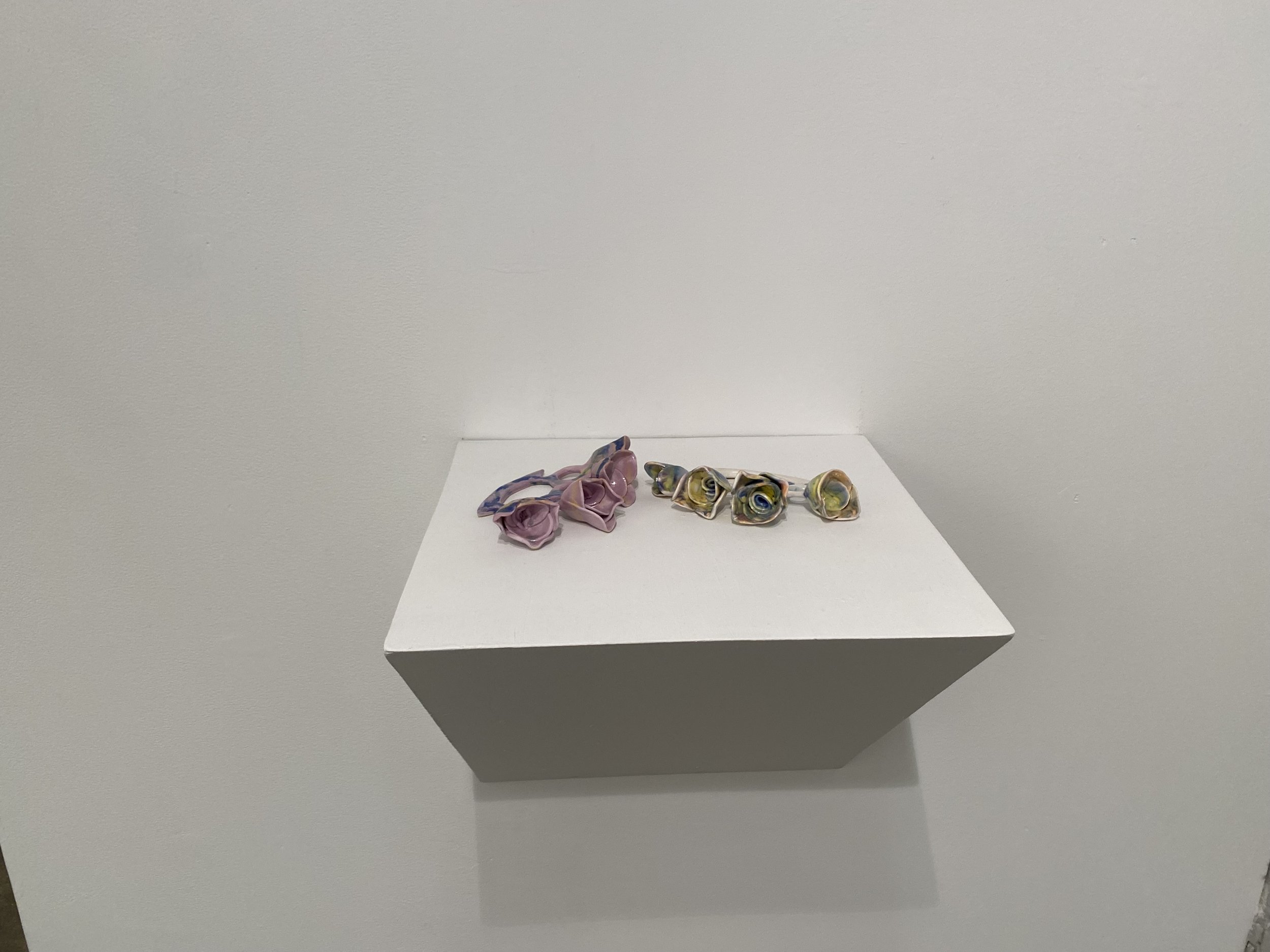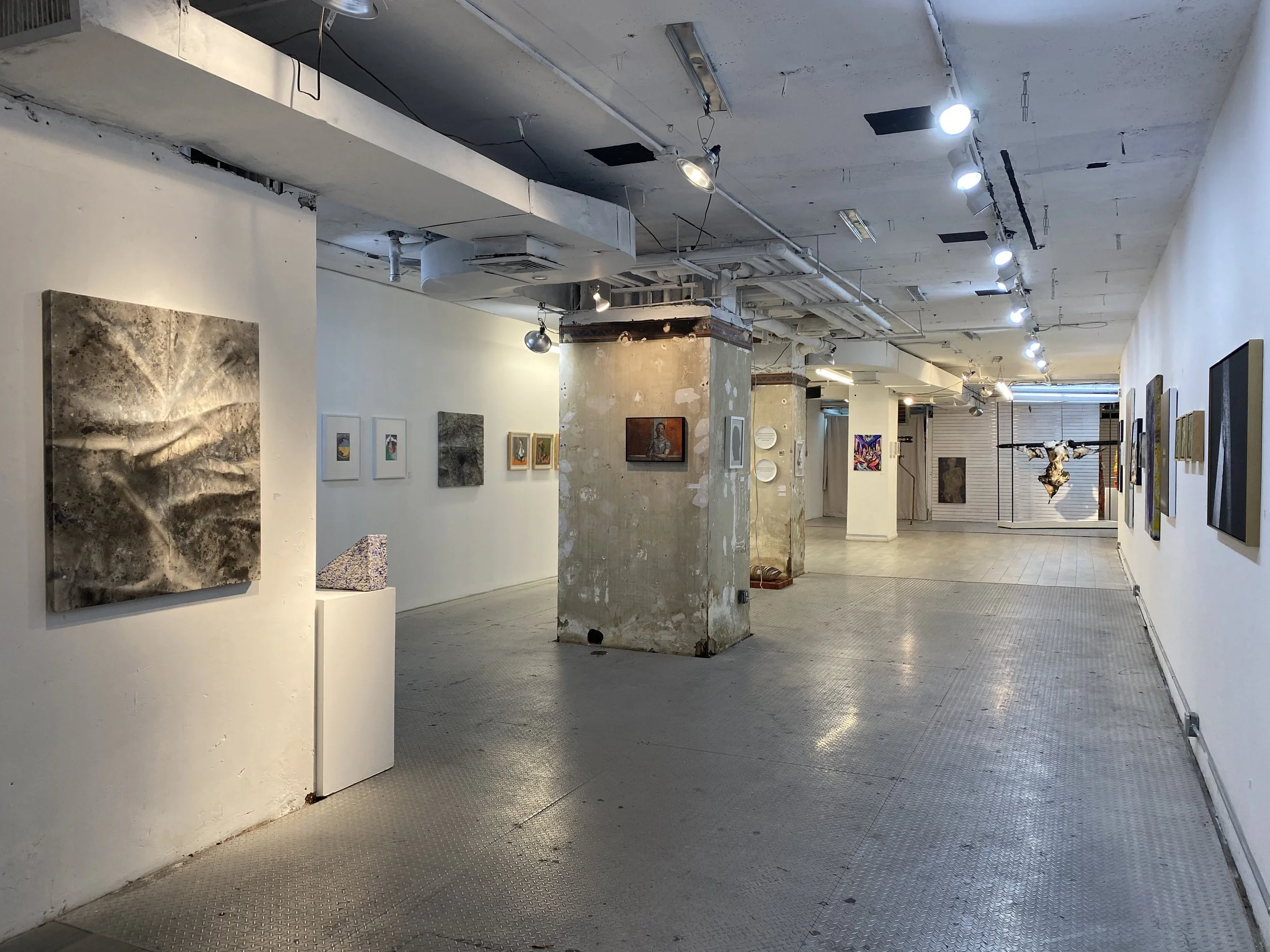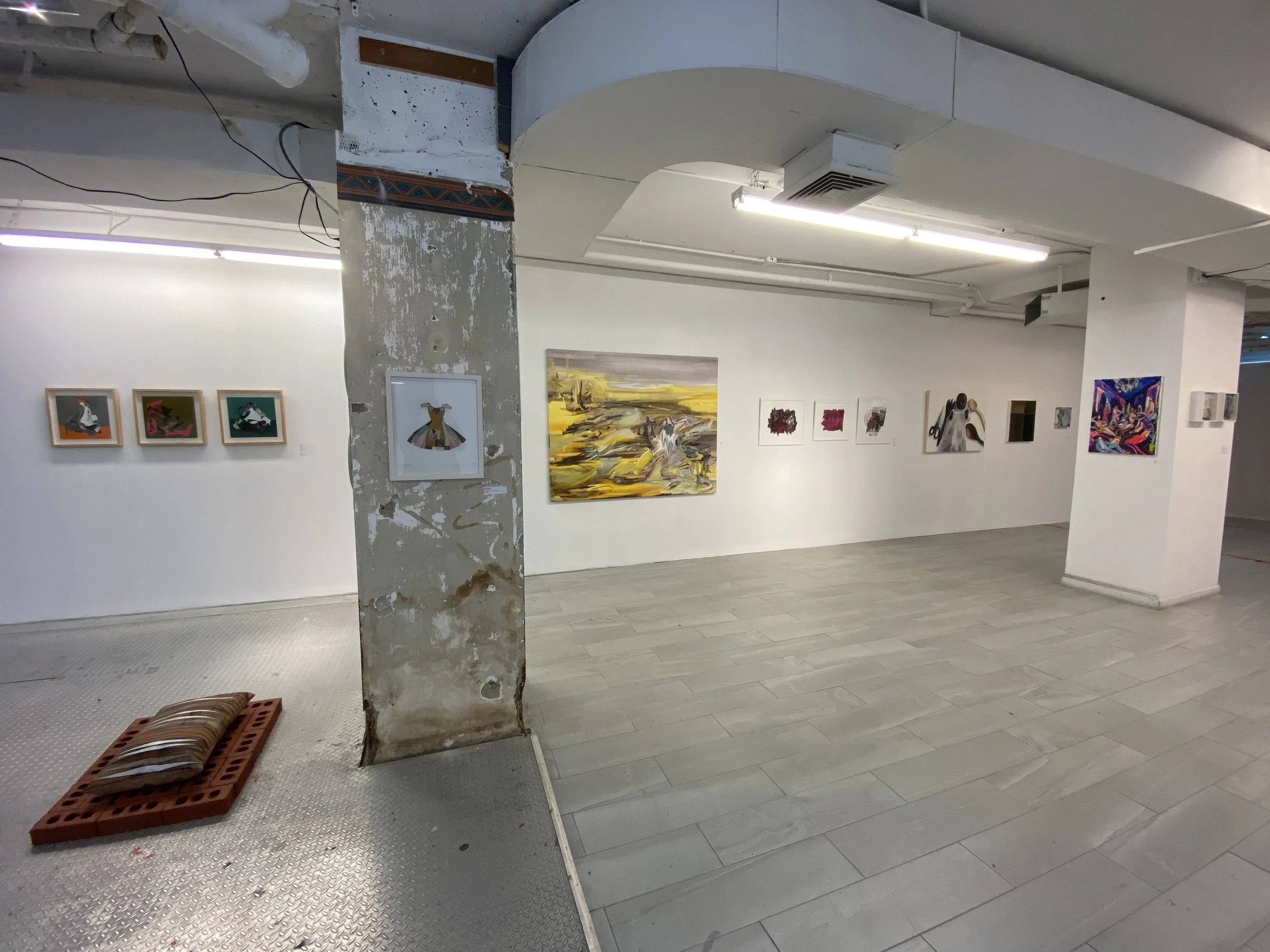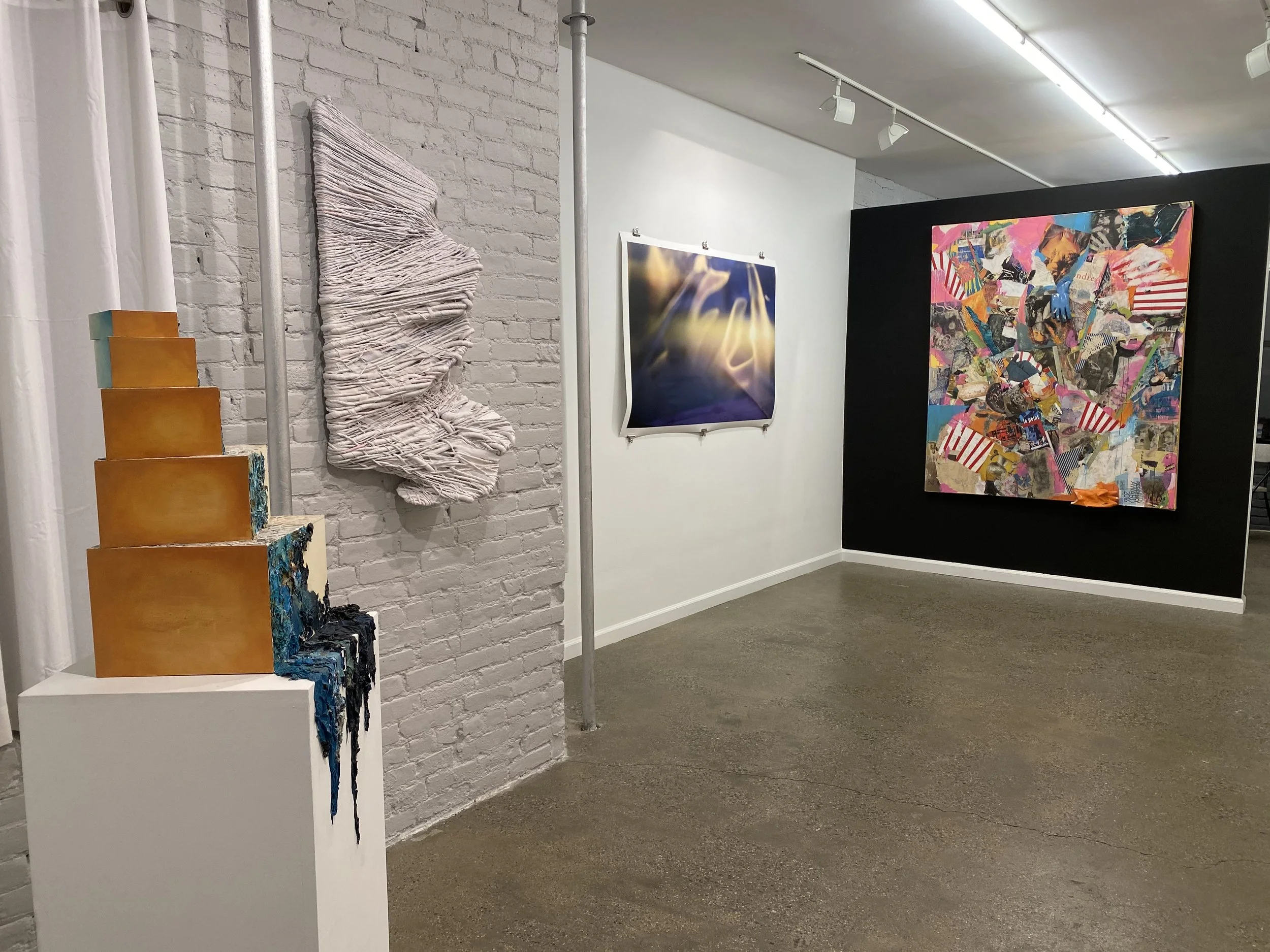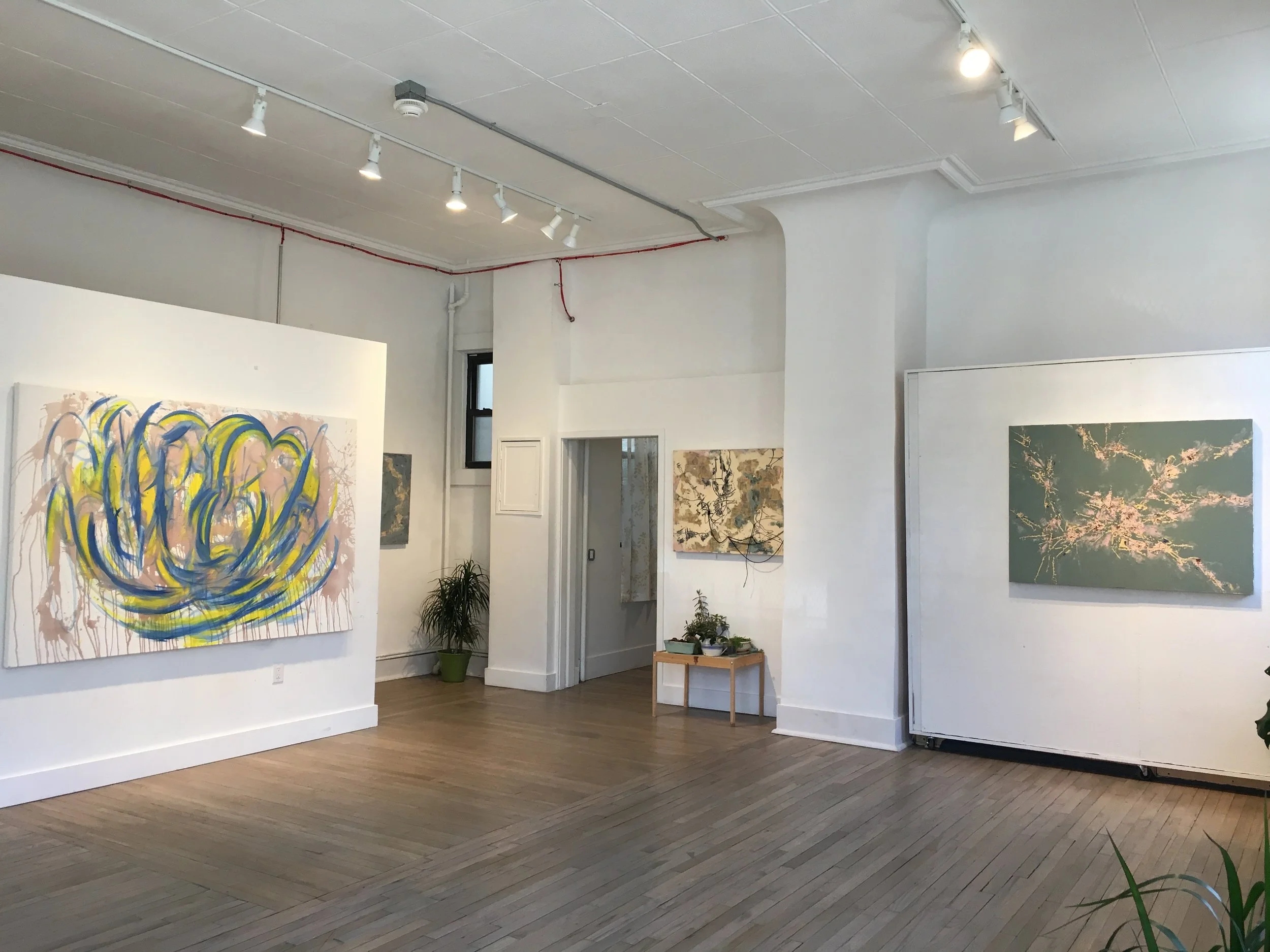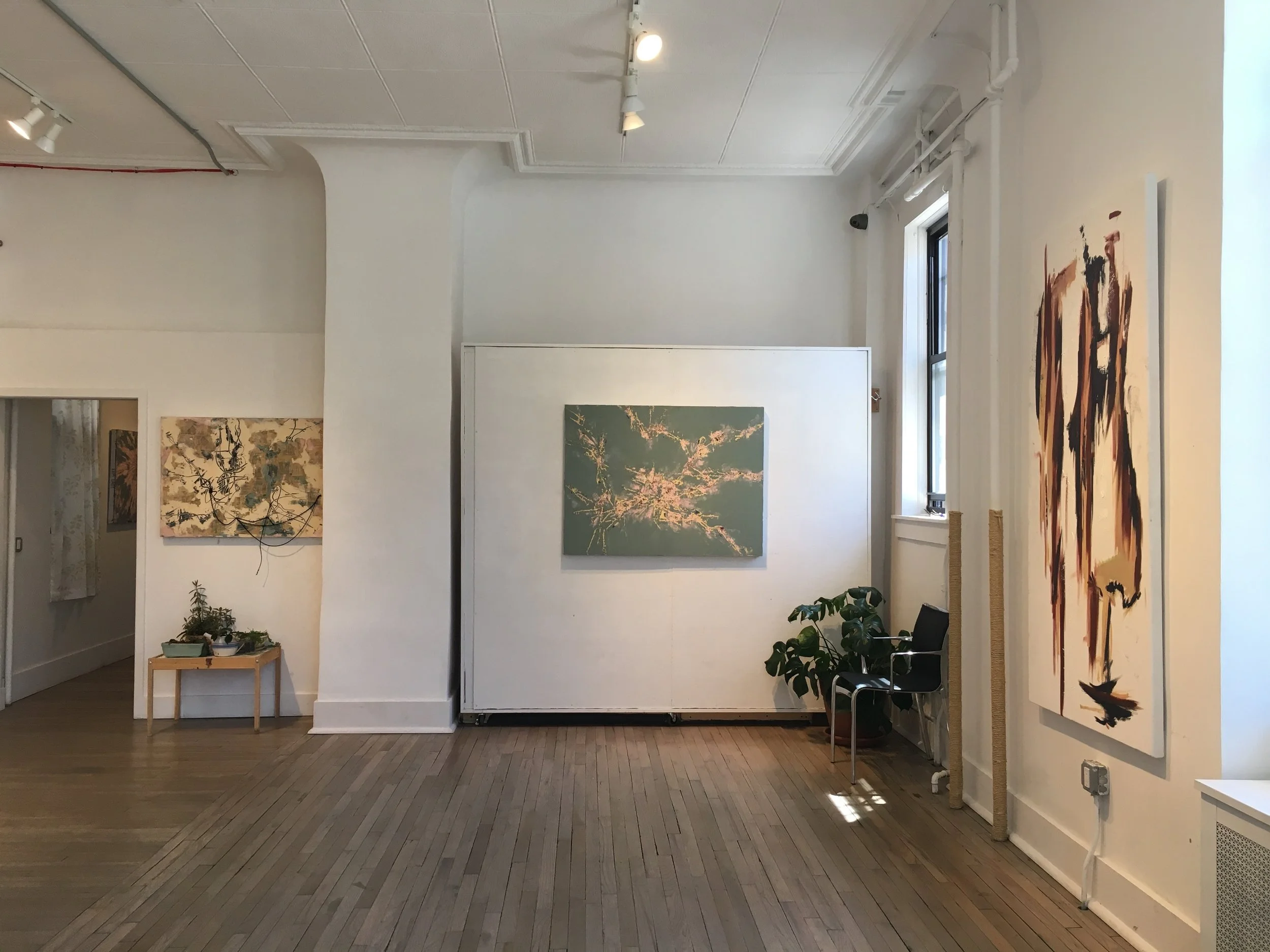Elsewhere is defined as “in, at, or to some other place or other places”. In this exhibition 25 artists meditate on the meaning of “place”, exploring the physical, philosophical and spiritual interpretations. Reflecting on universal elements of reality as well as abstract and intangible concepts, these artists depict ideas of identity, time, and space through their works, seeking to understand fundamental truths about their relationships to the world.
Artworks have the ability to travel to the cosmos and other landscapes, traversing life forms, creating dimensions reminiscent of, yet outside of what we know. With Sandra Taggart’s painted sea and starry skyscape she creates an invented place as a meditation on the environment. Gale Rothstein’s assemblage of natural and industrial elements reflects another planet, walking through millennia of evolutions and transformations, everywhere and nowhere at once. Barbara Slitkin’s painted garden features mysterious figures that dwell in a realm outside of ours. Pearl Rosen Golden’s painting depicts a worrisome sky that questions interpretation of our real and unreal quality of life.
Matter and spirit are deeply intertwined, evoking a sense of something more than what our eyes can see; a restless shifting of light and energy indicating something beyond our physical world, something metaphysical. Through Karen Fitzgerald’s ambient application of paint onto a circular surface, she makes visible the universal interconnected energies within our material and spirit worlds. Kristin Reed layers radiating geometric patterns in her painting to explore inter-dimensionality, a place in the grid of consciousness where our world resonates with another simultaneous place that overlaps—normally hidden from our view. Aida Markiw imagines another world far away in the Universe through her depiction of abstracted particles in motion.
Surrounding oneself by primeval nature can be a powerful and emotional encounter, emphasizing nature's control over us. Eleanor Goldstein’s watercolor washes of blacks, blues and whites depict an environment where there is true silence, natural darkness, and natural light, evoking a demanding, hypnotic, and incredibly moving experience. Marianne Barcellona’s collage of painted paper depicts a disturbing and turbulent place on perhaps another planet, a thunderous and tumultuous environment with ominous rocks, and a terrifyingly threatening sky. Lynn Friedman’s atmospheric oil painting imagines experiencing the force of nature from above, depicting a multitude of natural phenomena at once. Fran Beallor’s intricate aerial glacier drawing appears to be abstract but is in fact a realistic rendering, creating an intimate connection into its impossible blue depths.
Connecting to the natural world is essential for psychological, physical and cognitive well-being and can create a healing escape. Holly Meeker Rom’s collage and watercolor painting represents a world as a pageant of green looking out onto the unknown. Susan Grucci’s oil painting shows the bright green reeds that ebb and flow on top and beneath the surface of the water, bringing peace and contentment that infiltrates waking moments and dreams with yearning. Arthur Kvarnstrom creates a new, subjective reality in watercolor through the act of painting, choosing colors, and combining forms and shapes to bring out a world of imagination, emotion and feelings.
Rather than presenting a factual reality, a link between materiality and imagination can be established to create a place where fiction and reality are balanced and past and present fused. In her pastel drawing, Jacqueline Sferra Rada transforms a landscape to the bare essentials which are timeless, drawing on the aesthetic traditions of minimalism, realism and remembrance art. Jane Dell’s surreal landscape is a juxtaposition of collage elements and imaginary forms creating a dreamlike impression of a space that teeters between interior and exterior. David Alon Friedman uses color, line and texture as suggestions for the mind's eye, meant to take the viewer into a place that is both known and unknown with his use of oil pigment and graphite.
Time moves forward and backwards in our memories and can feel very real and very much in the present. Alice Harrison’s collage of different structures questions whether the imagery is a memory of the past, a look into the future, set in the here and now or perhaps all three at once. Linda Stillman documents the sky and earth through photographs that reflect and record a moment in time, placing her "head in the clouds" for a moment each day, to be transported. Ann R. Shapiro’s digital image of an abstracted lake house reflects nostalgia, a memory from the past evoking place as a remembered dream. Barbara Swanson Sherman’s pen and ink drawing of an underwater townhouse inhabited by sea life reflects changing tides over time. Norma Greenwood paints weeds growing inside an old train car, a reminder of days past when passengers were carried to another place.
Aspects of our identity can take us on a journey within and outside of ourselves. Irene Christensen’s accordion book contains memories of events, past and present, in the three countries that have shaped her identity, by depicting abstracted architectural and natural influences specific to each region. Ellen Wallenstein’s cyanotypes use jewelry and other heirloom objects to explore notions of illness and death creating a constellation of symbolism that surveys the different dimensions of one’s own body. Priscilla Stadler’s documented installation of hand dyed cheesecloth, wasp and birds nests and a wooden chair addresses forms of vulnerability and innate strength, loss and change beyond personal experience.
Elsewhere evokes a place or state of mind outside of our current condition, a realm of mystery, longing, fear or comfort. These works dictate a sense of place through color, shape and texture, resulting in a nebulous impression that feels familiar and alien all at once.



